The colors of royalty, wealth, and spirituality have long been associated with purple. It is admired in art, fashion, and design because it is a color that shines out in nature. We acknowledge and appreciate the wide variety of things, events, and living things that exhibit the deep, seductive hues of purple. We highlight the range and richness of this alluring color, from the majesty of a purple galaxy at night to the whimsical appeal of a purple unicorn plushie.
We’ll go into great depth about each item and examine the distinctive features that make them exceptional. We will emphasize the various ways that this hue appears in our environment, from the delicious sweetness of a purple grape to the velvety smoothness of a purple cashmere scarf. This essay will thrill and inspire you whether you’re a fan of all things purple or are just interested in how color affects our experiences. Join us as we explore the world of purple, soaking in its radiance and marveling at its many beauties.
Galaxy

It is uncommon for galaxies to be purple. The age, chemical makeup, and light wavelengths that a galaxy emits or absorbs are only a few of the variables that affect its hue. Although some galaxies may appear to have a bluish or reddish tint as a result of specific gases present in them or the age of their stars, galaxies do not typically have the color purple. The purple tint that some telescope or camera photographs of galaxies may have been given during processing or enhancement is not a genuine representation of the color of the galaxy.
Lavender
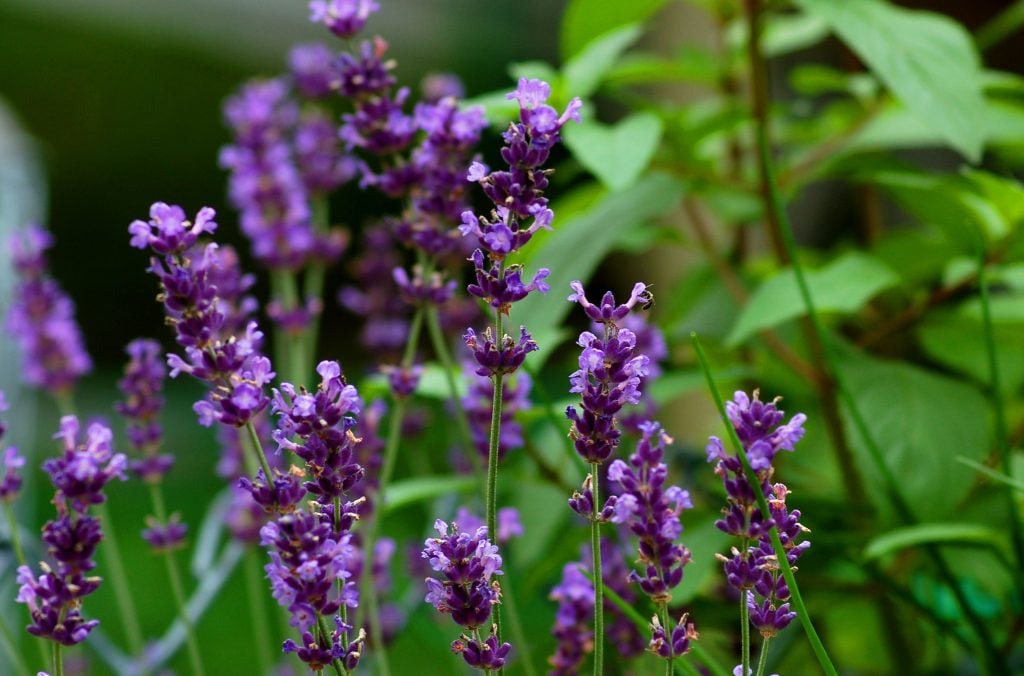
The mint family includes the aromatic perennial plant known as lavender. It is well-known for its lovely purple blossoms and fragrant aroma. Aromatherapy frequently makes use of lavender, and it is also a prevalent element in soaps, perfumes, and other personal care items. Additionally, it has culinary uses like tea and dessert flavoring. Although it originated in the Mediterranean area, lavender is now grown all over the world. Due to its ease of cultivation and ability to draw bees and butterflies, it is a common plant for backyard gardening.
Campanula Bellflower
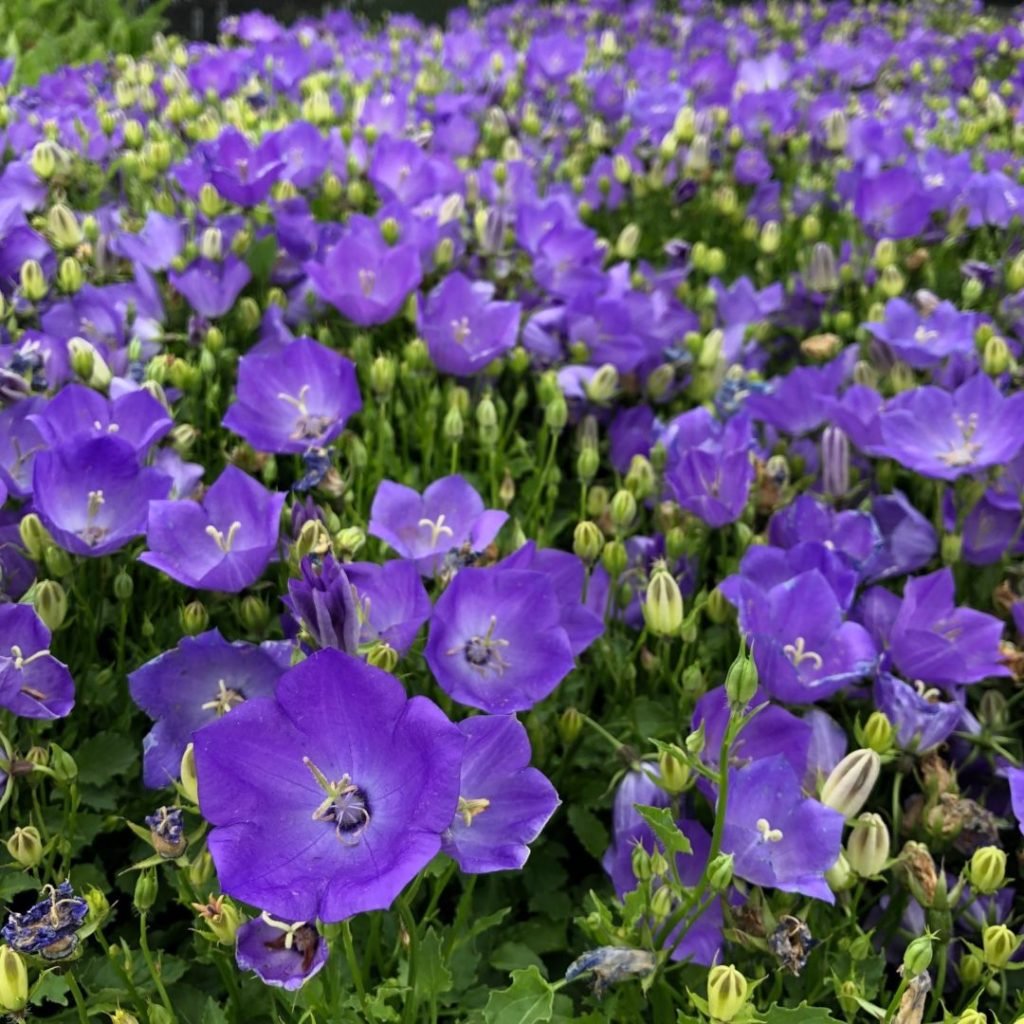
A flowering plant genus belonging to the Campanulaceae family, Campanula bellflower is indigenous to numerous parts of the world. It is a well-liked garden plant for borders, groundcovers, pots, and rock gardens due to its striking, bell-shaped blooms that come in a variety of hues. Low-maintenance campanula bellflowers need just minimal watering and full or partial sun exposure.
Aster
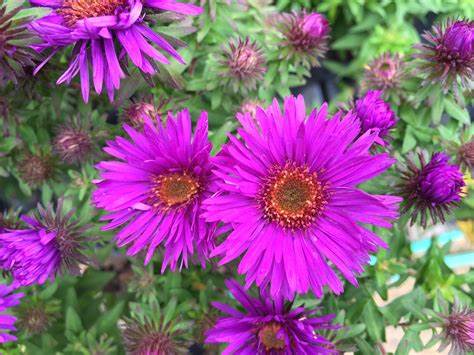
The Asteraceae family’s blooms, which resemble daisies, are known as asters. They produce little disk blooms in the form of stars with a yellow center. Asters come in all shapes and hues, and they are perennials. Known for flowering far into the fall, certain kinds. Because of their eye-catching hues, distinctive shapes, and capacity to give interest to various situations, asters are a preferred option.
Purple Grape Hyacinth
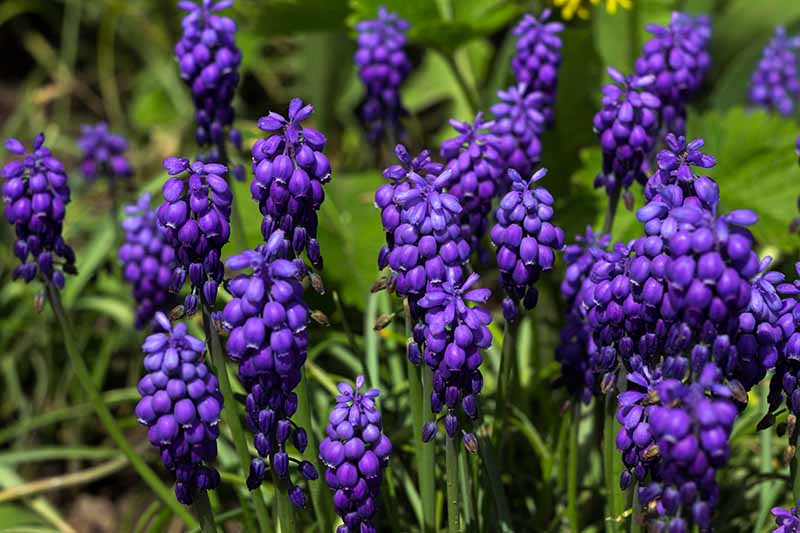
Muscari armeniacum, popularly known as purple grape hyacinth, is a little bulbous plant that is indigenous to the eastern Mediterranean. It is planted as an ornamental plant because of its lovely spikes of closely packed, bell-shaped blooms that bloom in the early spring. The blooms are characterized as looking like little grapes or berries and range in hue from deep purple to blue. The plant loves well-drained soils with full to partial light and grows to a height of around 15 cm (6 inches).
Foxglove
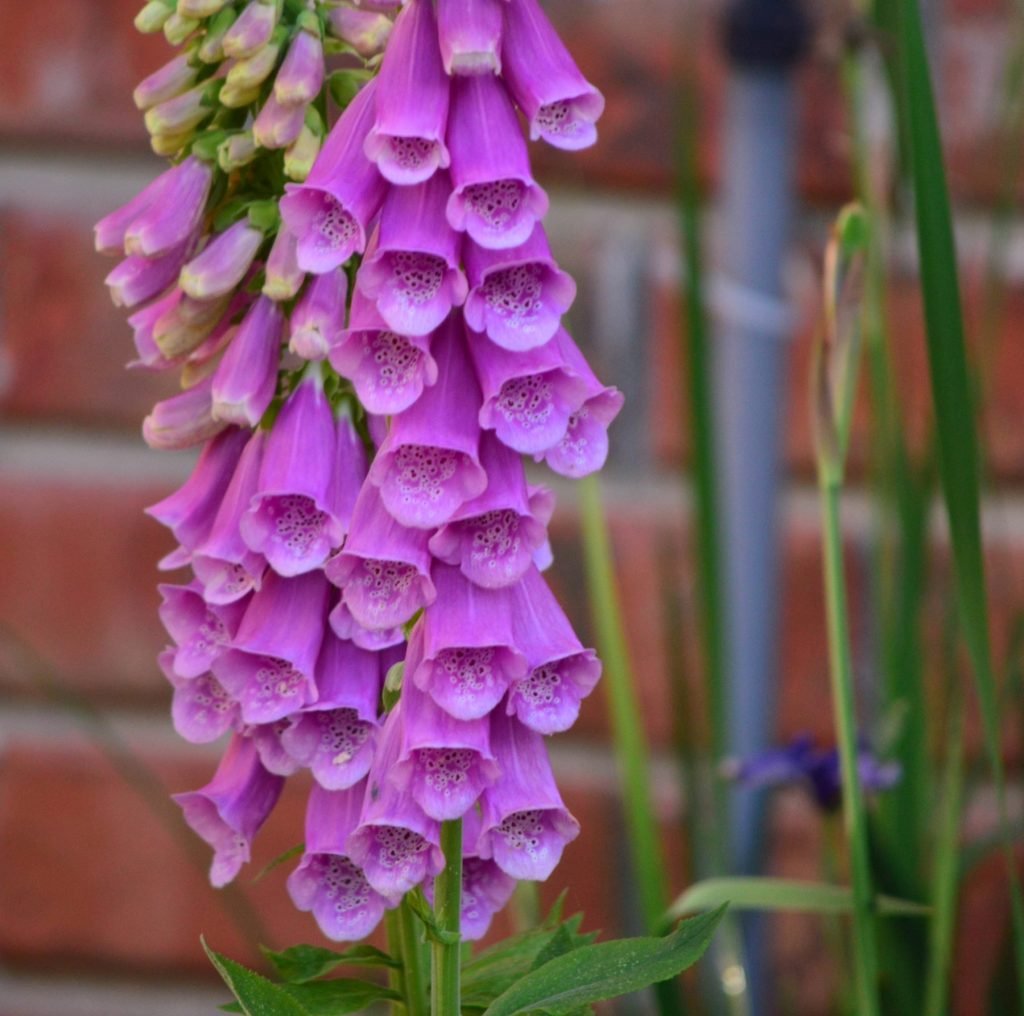
A biennial plant, foxglove may grow up to 6 feet tall and has long spikes of bell-shaped blooms that range in color from white to purple. Although it has been used medicinally for centuries, consuming large amounts of it can be poisonous.
Giant Onion Flower
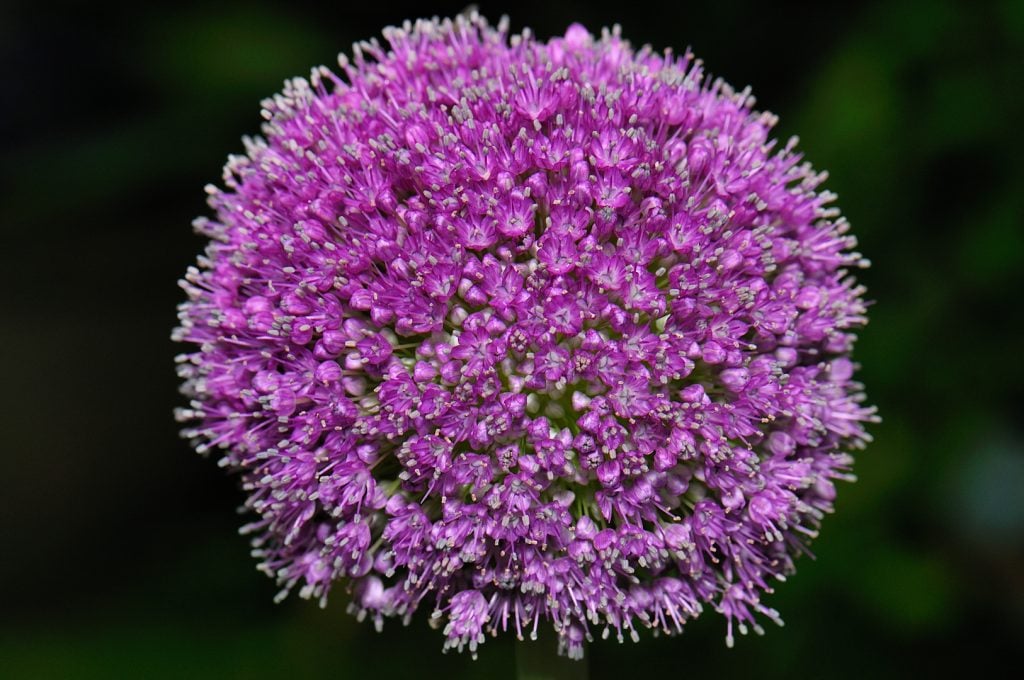
Large, showy blooming plants are a native of Central Asia, and Allium giganteum, often known as the Giant Onion Flower, is one among them. Late spring or early summer sees the blooming of its spherical, pinkish–purple flower heads, which can reach a diameter of 6 inches. The plant is frequently used as a stunning focal point in garden borders and loves sunny conditions with well-drained soil. Gardeners frequently choose it due to its outstanding look.
Hollyhock Flower
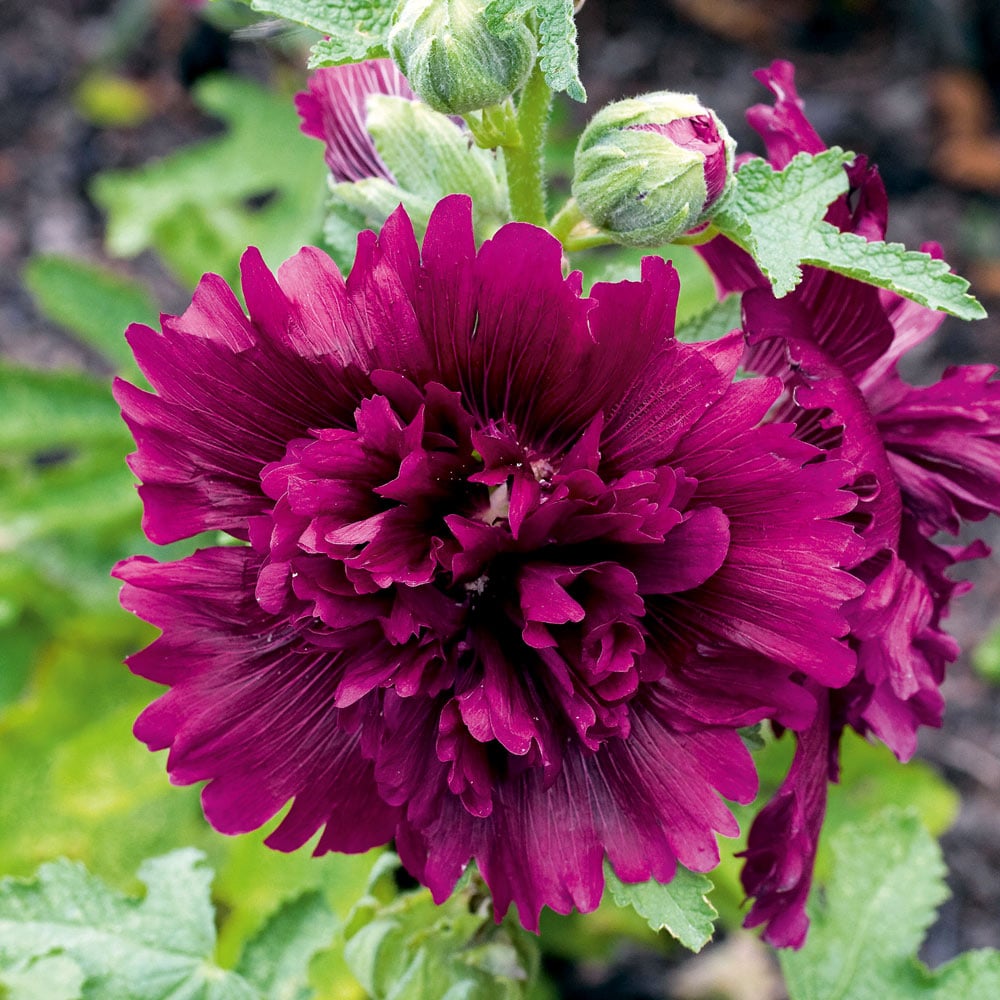
The tall and flamboyant hollyhock is a blooming plant that is native to Asia and Europe but is planted extensively in gardens all over the world. It may grow up to 8 feet tall and is a member of the mallow family. Large and cup-shaped, the blooms are available in a variety of hues, including pink, purple, yellow, red, and white. Pollinators like bees and butterflies enjoy visiting them while they are in bloom in the summer. For their impressive height and gorgeous blooms, hollyhocks are frequently grown along fences, borders, and in cottage gardens.
Pansy
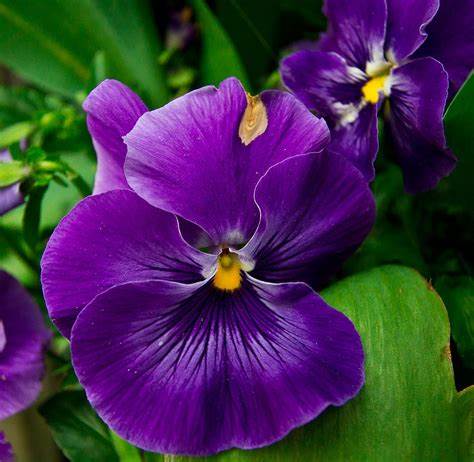
Known for its colorful, heart-shaped petals, pansies are a kind of flowering plant. They are a preferred selection for winter and spring gardening since they are hardy and bloom all during the chilly months. As ornamental plants in pots or hanging baskets, they are frequently utilized in flower arrangements.
Morning Glory
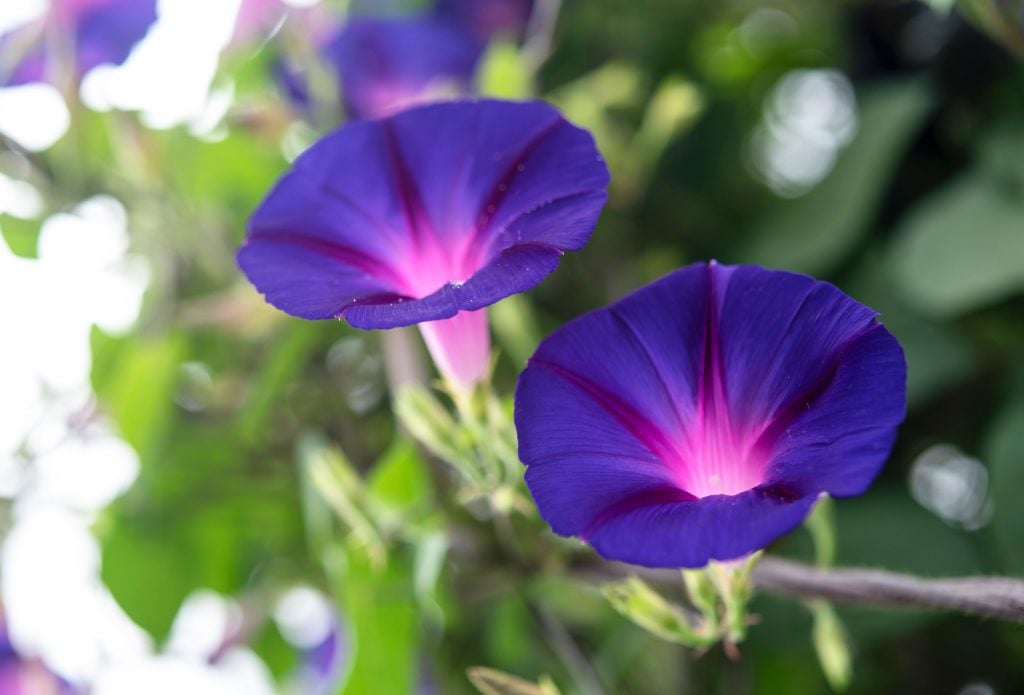
A blooming plant species in the Convolvulaceae family is referred to as “morning glory.” These plants are named after their bright trumpet-shaped blooms, which normally open in the morning. Due to their propensity to wrap over trellises, fences, and other support structures, morning glory plants are attractive in gardens and frequently cultivated as climbers. Their potential health advantages have been researched, and they are also employed in conventional medicine. But care should be taken when handling some morning glory species because they can be invasive and dangerous if consumed.
Verbena
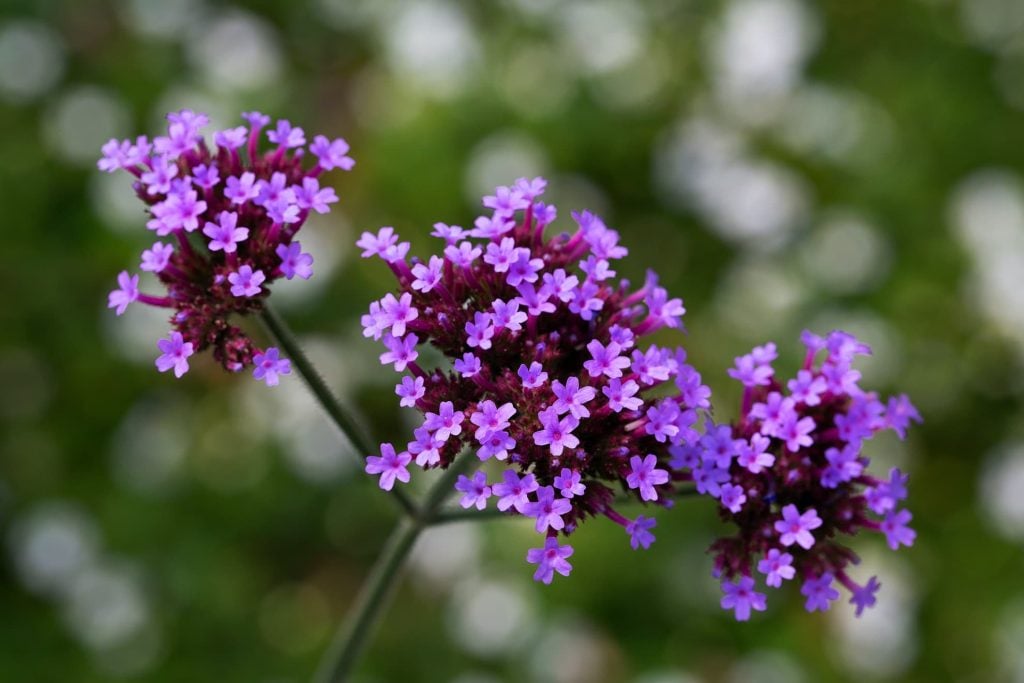
More than 250 species of annuals, perennials, and shrubs make up the Verbenaceae family of flowering plants, which includes the genus Verbena. The clusters of tiny, vividly colored blooms that grow on these bushes throughout the summer and fall are what make them so distinctive. Various ailments can be treated with verbena species both in ornamental gardening and conventional medicine. V. bonariensis, V. hastata, and V. rigida are three common Verbena species.
Canterbury Bells
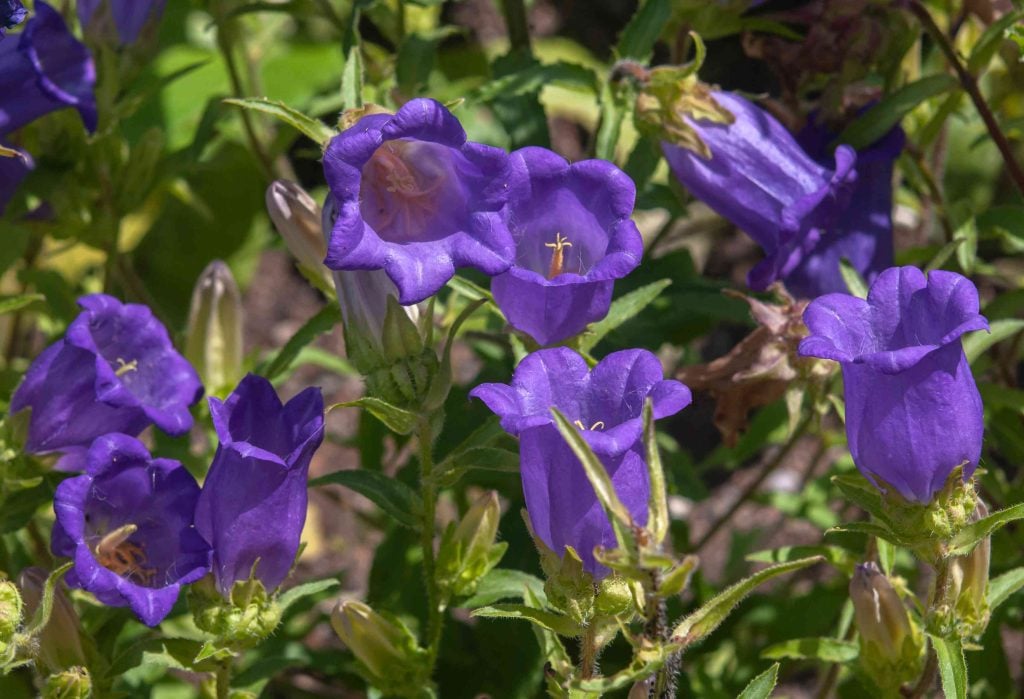
The beautiful blooming plant known as Canterbury Bells, commonly referred to as Campanula medium, is a member of the bellflower family. They may reach heights of up to 2-3 feet and are indigenous to Europe. The bell-shaped blooms of the Canterbury Bells have five petals and are available in a variety of hues, including white, pink, blue, and purple. For their gorgeous and showy flowers, they are a favorite of gardeners and typically bloom in late spring or early summer. Canterbury Bells are a wonderful addition to any garden or flower area since they demand well-draining soil and some shade.
Crocus
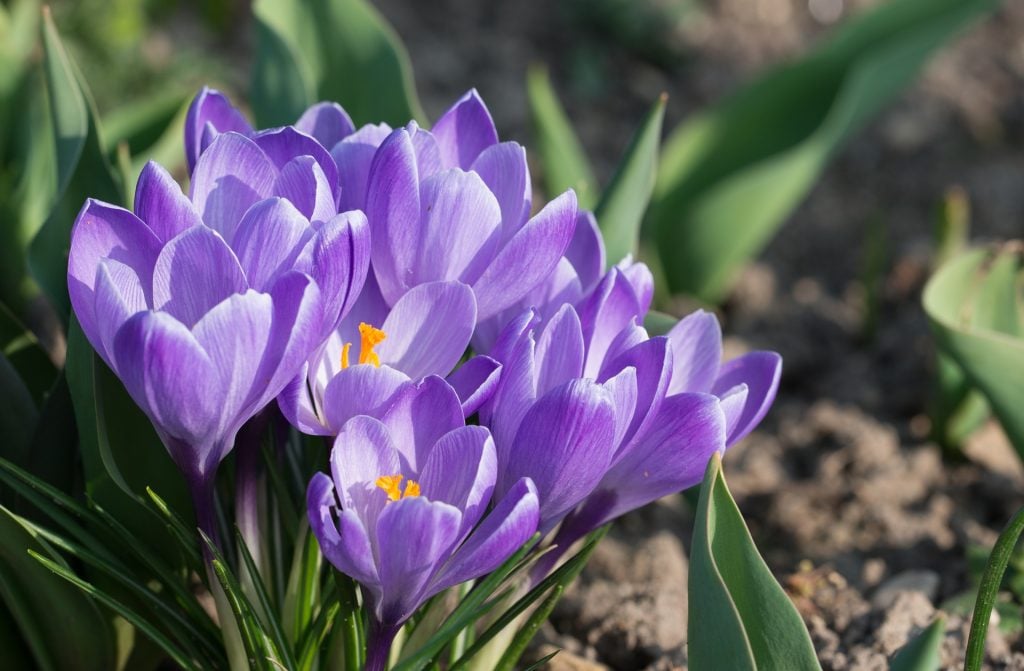
In the iris family, the genus Crocus contains over 90 species of flowering plants, the majority of which are found in Europe and Asia. They are renowned for their colorful, brilliant flowers that open in late winter or the beginning of spring, frequently before the snow has fully melted. Three stamens and three petals are the norm for crocuses, which can also have petals that are purple, yellow, white, or orange in hue. Some crocus species are prized for their traditional medical applications as well, especially in the management of ailments like digestive problems and asthma.
Scabiosa
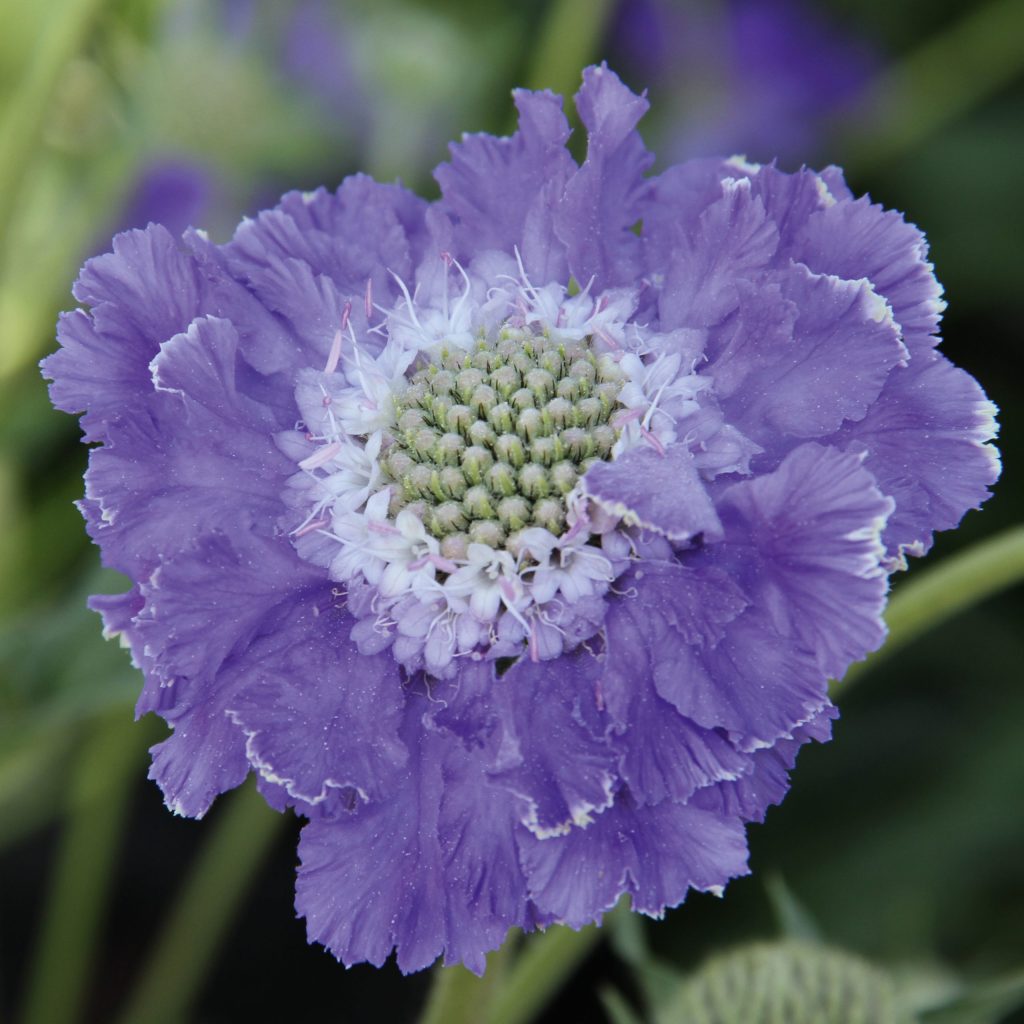
A genus of flowering plants called Scabiosa features stunning blooms that bloom in a variety of hues. They are common in gardens and are native to Europe, Asia, and Africa. They attract pollinators and appreciate full light and well-drained soil. Scabiosa is often referred to as sweet scabious, sad bride, and pincushion flower.
Cortinarius Violaceus
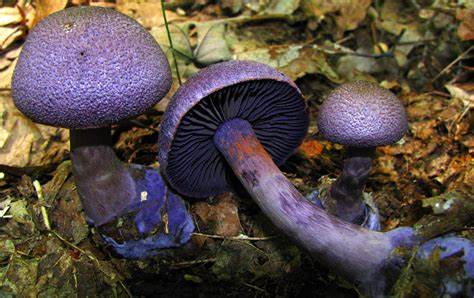
A species of mushroom from the genus Cortinarius is called Cortinarius violaceus, or the violet webcap. It grows in deciduous and coniferous forests all throughout Europe and North America and is distinguished by its stunningly lovely, dark violet head and stem. It is not commonly thought to be harmful, but because it resembles other hazardous mushrooms of the Cortinarius genus, it is generally not advised for ingestion.
Purple Onion
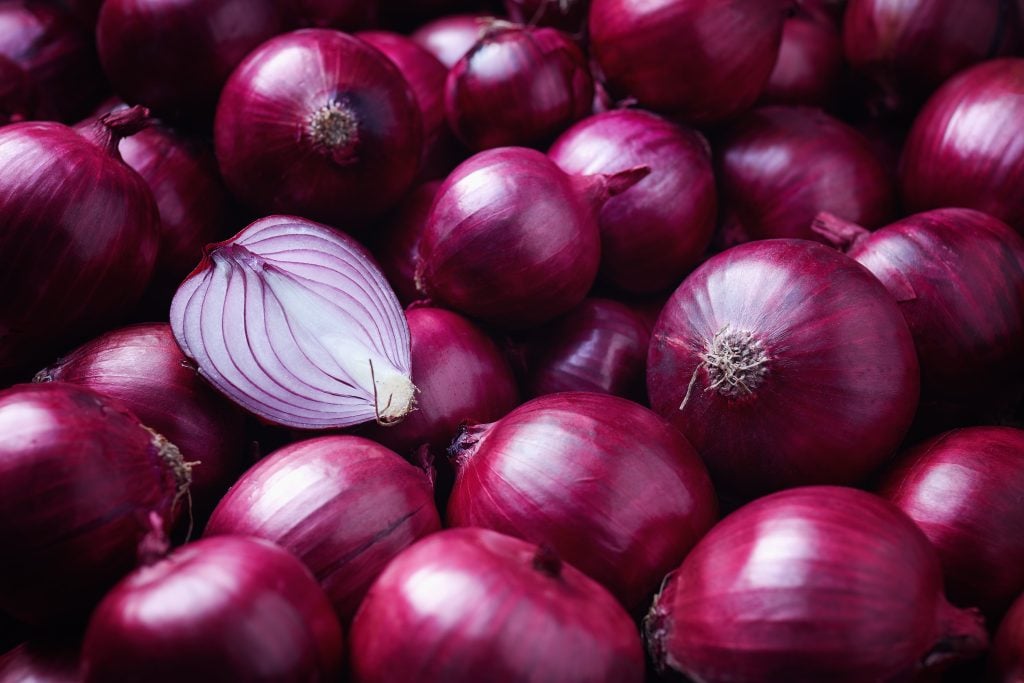
Reddish–purple skin and white flesh define the purple onion, sometimes referred to as the red onion. It is frequently used in salads, sandwiches, and other prepared foods. It has a pleasantly sweet and tangy flavor. Purple onions are a nutritious addition to many dishes since they are a wonderful source of vitamins and antioxidants and have few calories.
Purple Carrot
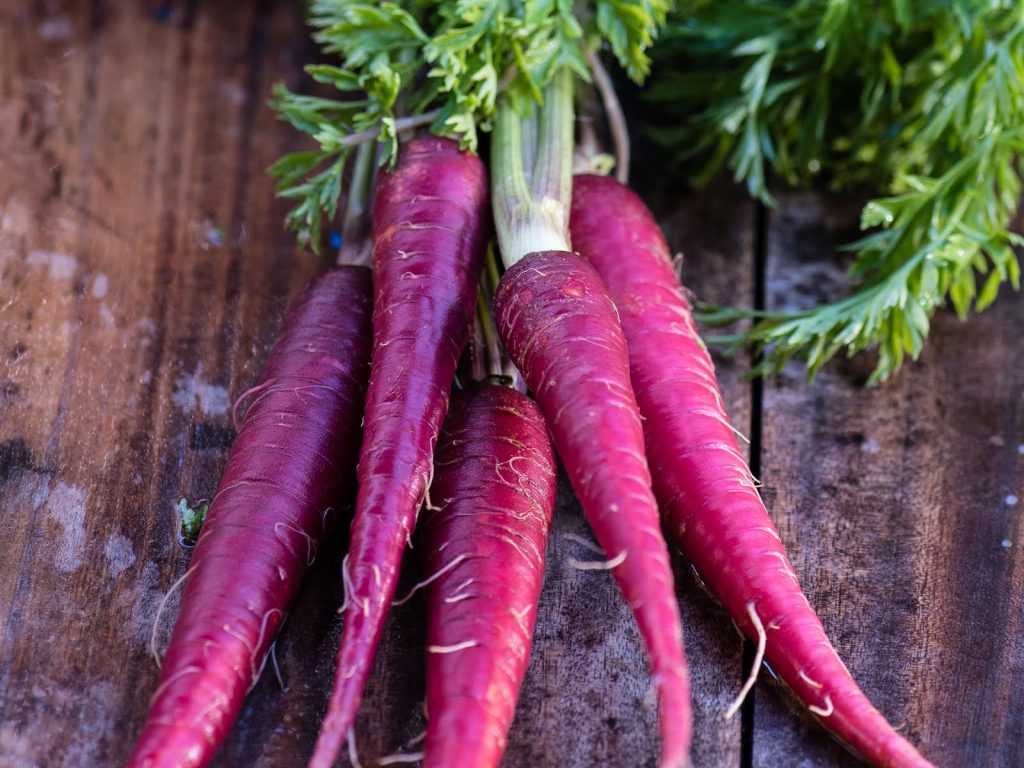
The purple carrot is a kind of carrot that has an orange inner and a deep purple outside. It is an antioxidant- and phytonutrient-rich vegetable with a somewhat sweeter flavor than normal carrots. Including salads, soups, stews, stir-fries, and other foods, purple carrots can be consumed raw or cooked.
Eggplant
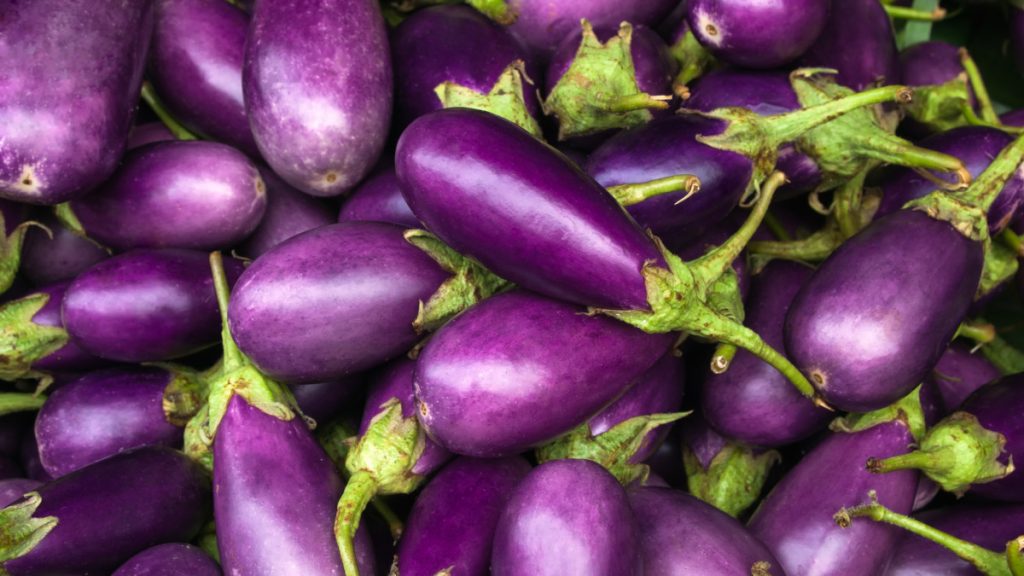
In Mediterranean and Middle Eastern cuisine, purple eggplant, often known as aubergine, is a common vegetable. It is capable of being prepared in a variety of ways and has dark purple skin and spongy meat. It adds health to meals since it is a wonderful source of fiber, vitamins, and minerals.
Purple Broccoli
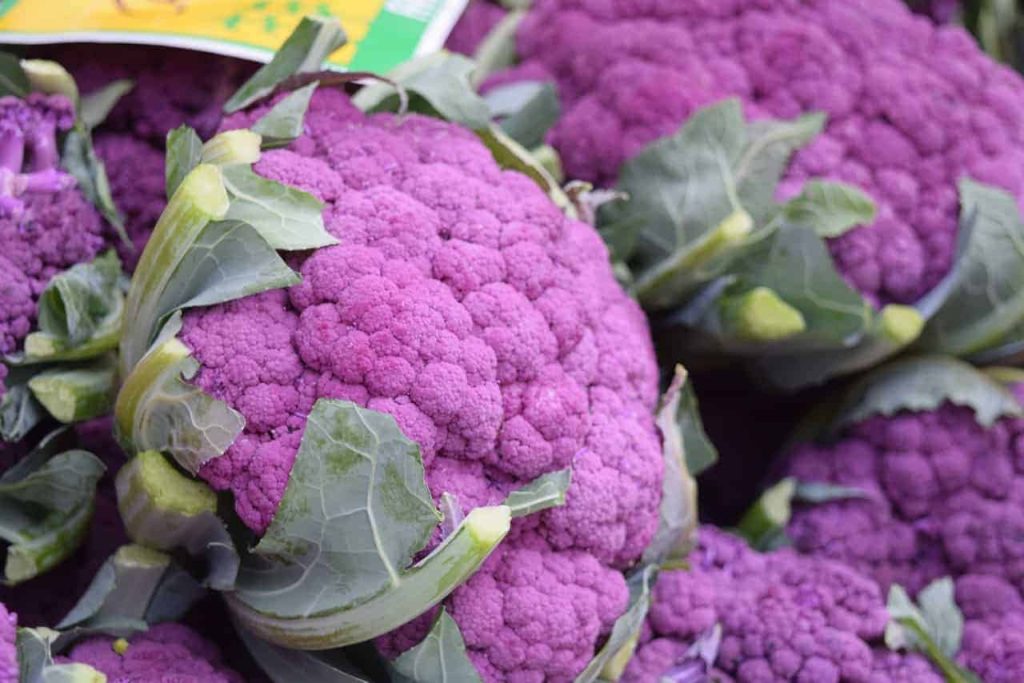
A hybrid vegetable that combines the qualities of broccoli and cauliflower, purple broccoli is sometimes referred to as purple cauliflower or broccoflower. In contrast to conventional broccoli, it tastes softer and sweeter and has a distinctive deep purple hue. Vitamins C and K, fiber, and antioxidants are all abundant in purple broccoli. It is a fantastic addition to salads, stir-fries, and soups and can be cooked in a number of different ways, including roasting, steaming, or sautéing.
Jabuticaba
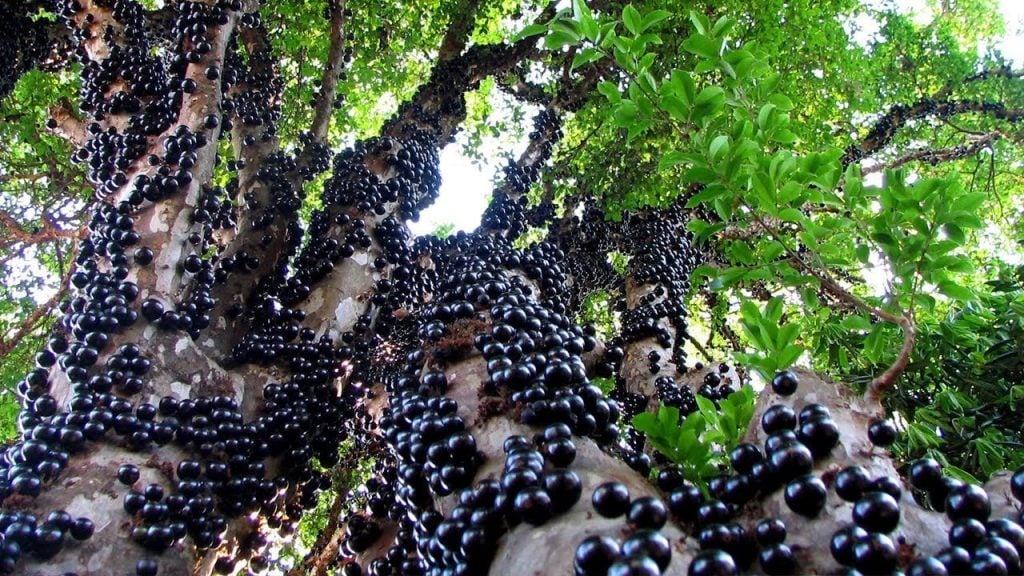
The jabuticaba tree bears the fruit known as jabuticaba, which is indigenous to Brazil. The fruit features a fruit-sized body and a lustrous, dark, purple–black skin. It has a white, juicy flesh within that has a flavor that is both sweet and acidic. Common uses for fruit include fresh consumption and the creation of jams, jellies, wines, and liqueurs. Additionally, it contains a lot of antioxidants, vitamins, and minerals. Jabuticabeira trees, which may reach a height of 15 meters, are well-liked decorative trees in Brazil.
Plum
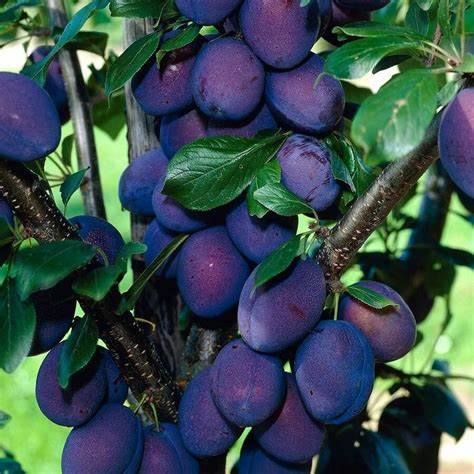
Plums are a type of fruit that are closely related to peaches, cherries, and apricots and are part of the Prunus genus. It is a tiny, oblong or spherical fruit with a delicious, juicy pulp that, depending on the type, can be deep purple, red, yellow, green, or even black. Plums are a nutritious snack choice since they are loaded with vitamins and minerals including vitamin C, vitamin K, potassium, and fiber. They may be used in jams, sauces, pies, and other baked items in addition to being frequently consumed fresh.
Mangosteen
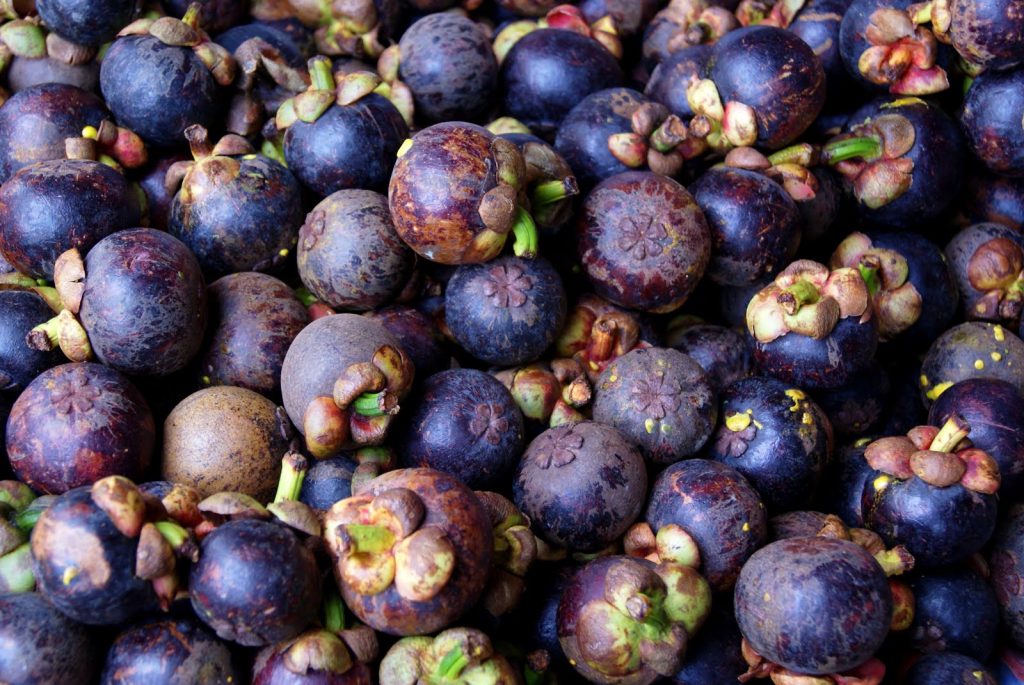
Mangosteen is a tropical fruit with a dark purple outer skin and sweet, white, segmented flesh inside. It is a native of Southeast Asia and is renowned for having a flavor all its own, frequently compared to a blend of peach, strawberry, and vanilla ice cream. Due to the presence of xanthones, a class of naturally occurring chemicals, mangosteen is also thought to provide a variety of health advantages, including anti-inflammatory qualities and potential anti-cancer effects.
Purple Yam
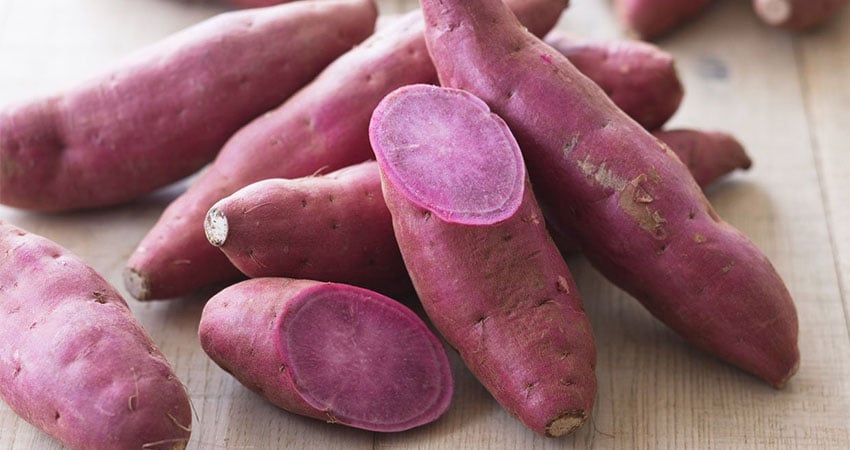
A starchy root vegetable often found in Southeast Asia and the Philippines is the purple yam, also known as ube. It has skin that is brownish on the exterior and a vivid purple color within. Purple yam is a well-liked component in sweets including cakes, ice cream, and pastries because of its somewhat sweet and nutty flavor. Additionally, it is used in savory dishes like stews and curries. Purple yam is a beneficial supplement to any diet since it is full of fiber, important minerals, and antioxidants.
Asparagus
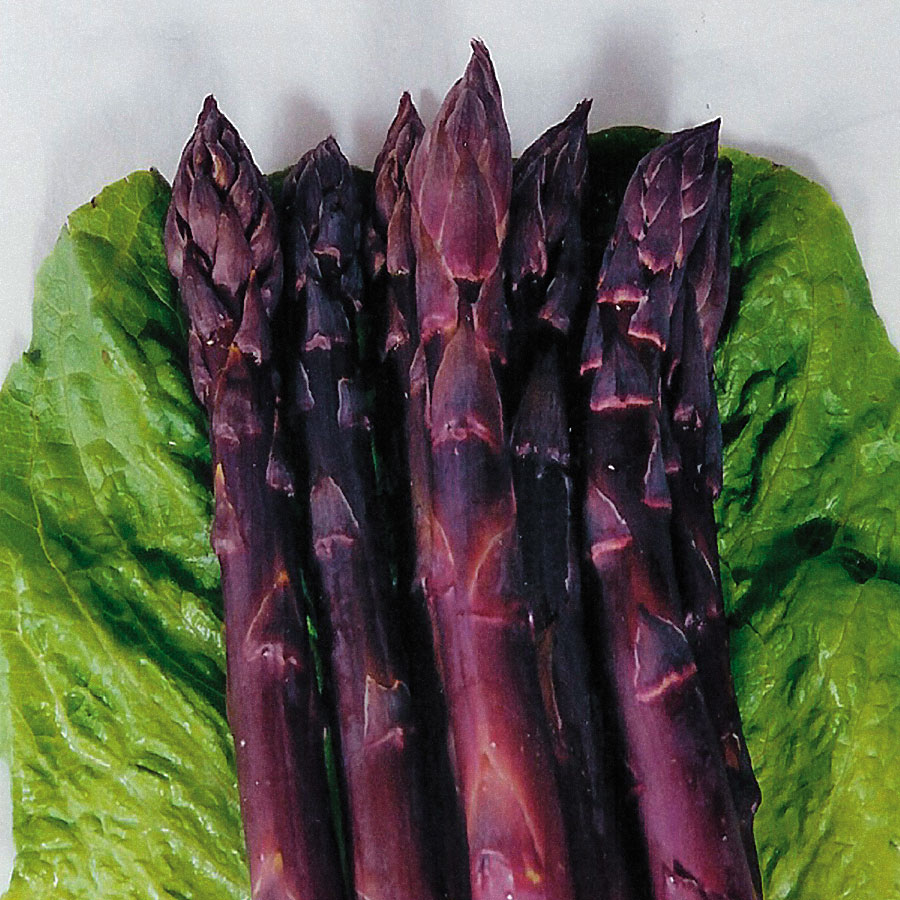
The soft, delicious spears of asparagus, a perennial vegetable, are highly valued. It is indigenous to Europe, Asia, and Africa, but it is also grown in many other regions of the world today. Usually green, asparagus spears can also be white or purple. They are gathered in the spring and early summer and may be used in a variety of meals both fresh and cooked. Because it is low in calories and a good source of vitamins, minerals, and fiber, asparagus is a nutritious addition to any diet. However, it is important to keep in mind that certain compounds found in asparagus can occasionally cause a distinct odor in urine after consumption.
Mandarin Duck
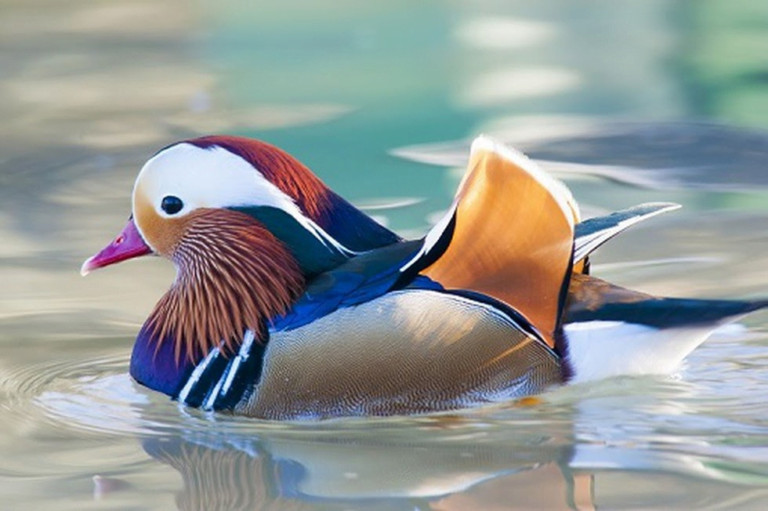
East Asia, encompassing China, Japan, and Korea, is home to the vividly colored Mandarin duck. With a red beak, a purple breast, and exquisite orange, green, and white feather patterns, the male has a distinctive look. Less colorful than the male, the female has a brownish–gray head and a white eye ring. Mandarin ducks are well-known for their intricate courting rituals and are frequently seen in forested settings close to bodies of water. In many cultures, they are regarded as a representation of love, faithfulness, and good fortune. They eat a range of plant and animal stuff.
Purple Glossy Starling
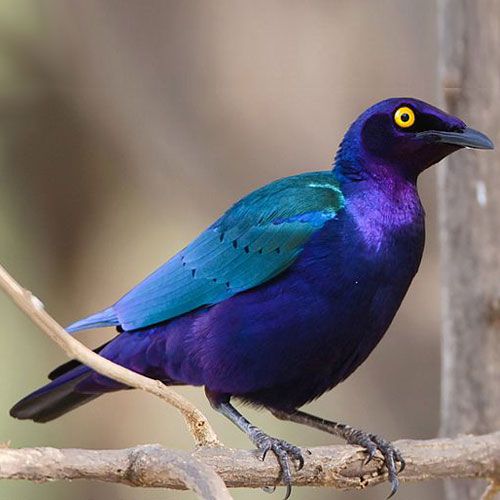
In sub-Saharan Africa, there is a species of bird known as the Purple Glossy Starling. Their feathers are a stunning shade of purple that shines in the sunlight. They also have a black beak and golden eyes. The majority of the time, these birds travel in small groups and feed mostly on fruits, insects, and other tiny vertebrate animals without backbones. They communicate with each other by making incredibly lovely noises. The male and female birds have a very similar appearance.
Purple Martin
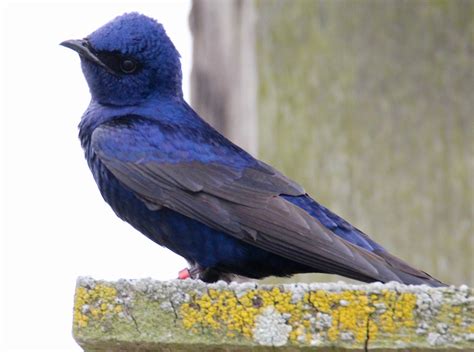
Native to North America, the Purple Martin is a species of bird renowned for both its spectacular beauty and distinctive behavior. Females and young males have lighter, duller coloring, while adult males have glossy, dark purple-blue plumage. As airborne insectivores, they capture flying insects as they are in flight. In addition, purple martins have a strong sense of community and frequently build their nests in structures constructed by people. They are well-liked by bird watchers and frequently drawn to backyards with specific structures made for them.
Purple Honeycreeper
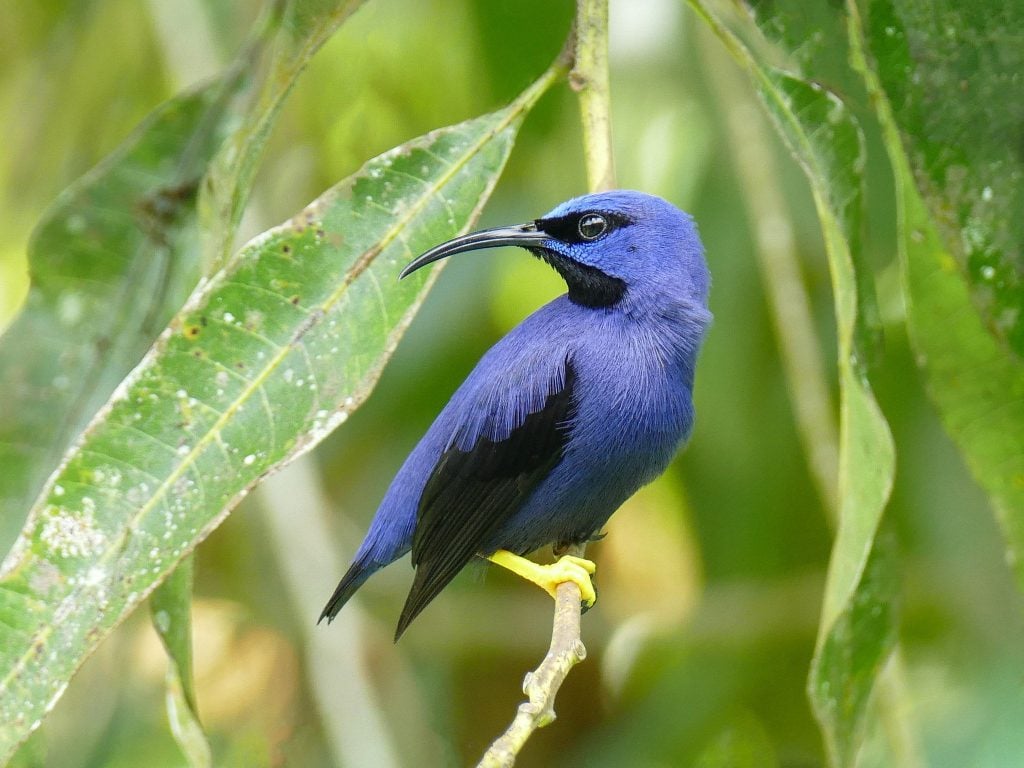
A little species of bird unique to Central and South America’s tropical regions is the purple honeycreeper. Males differentiate themselves from females with spectacular iridescent purple and blue plumage, displaying strong sexual dimorphism, while females have green feathers with blue and purple highlights on their wings and tail. The species, which is primarily an omnivore feeder, gets all of its nutrition from nectar, fruit, and insects and is an essential pollinator. Notably, ornithologists and birding aficionados prize the purple honeycreeper for its melodic vocalizations, making it a highly sought-after species.
Milka Coral
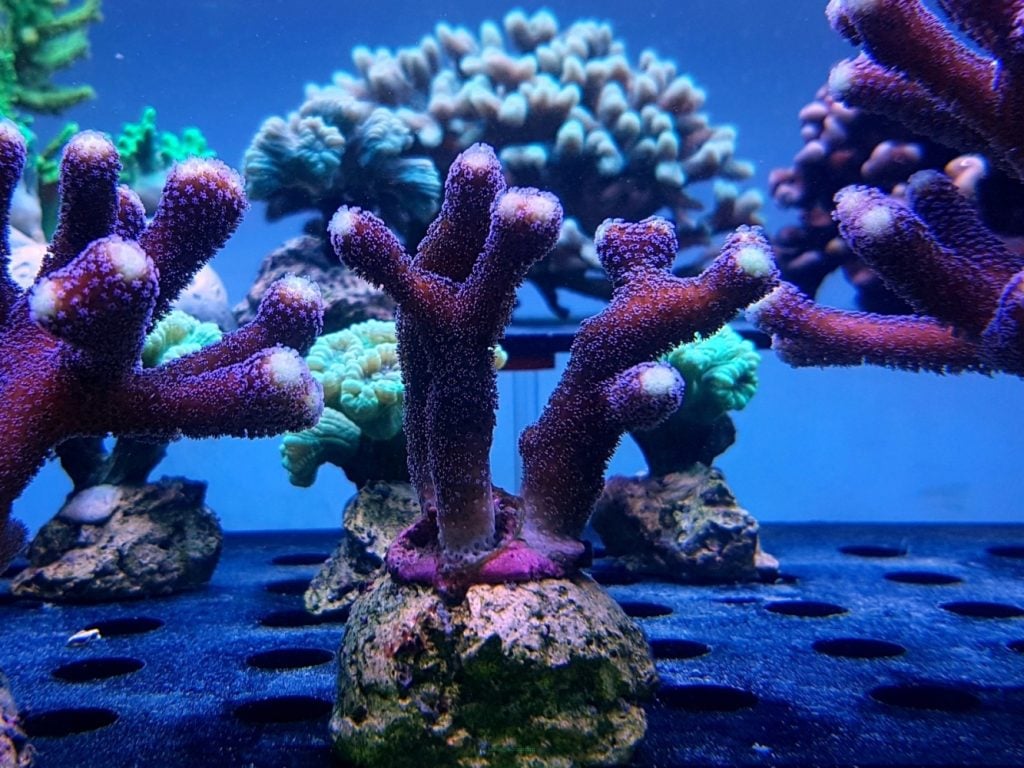
The Indo-Pacific is home to the little stony coral species Stylophora Milka. Due to its vivid pink or purple coloring, which mimics the color of the well-known candy bar, it is sometimes referred to as Milka coral. Because of its toughness and distinctive look, Stylophora Milka is a favorite among those who enjoy keeping marine aquariums. It normally grows in tiny, branching colonies and needs water flow and illumination levels between moderate and high to survive. To preserve the conservation of wild coral populations, it should only be purchased from ethical and sustainable vendors, like with other corals.
Purple Emperor
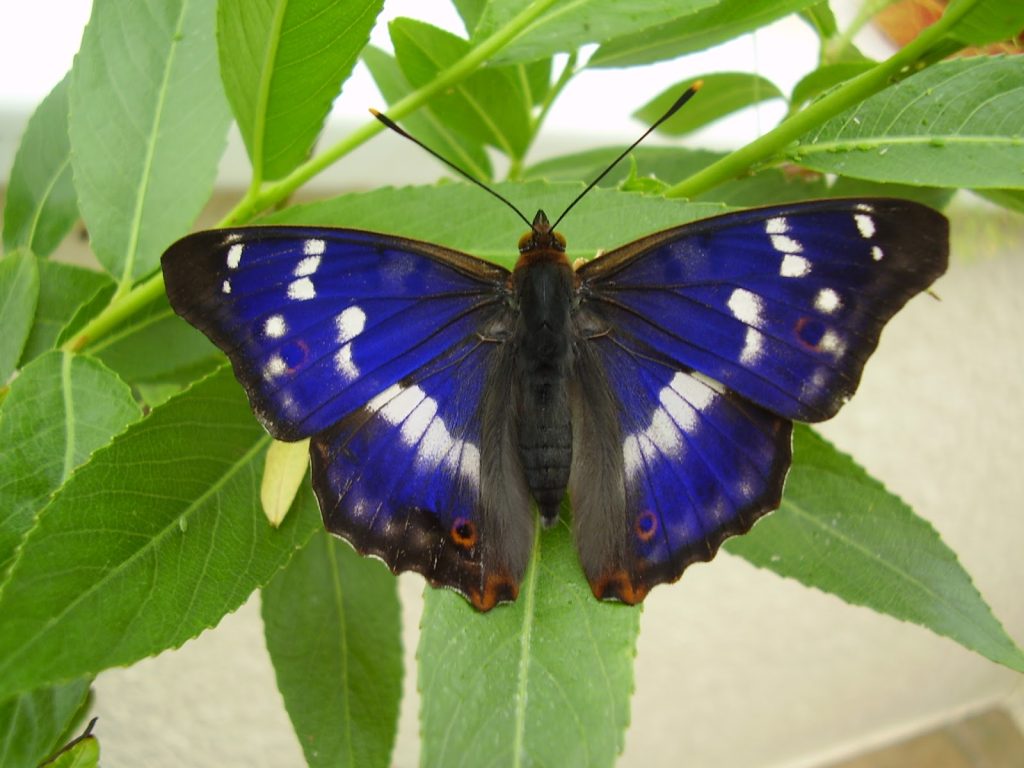
Large and eye-catching, the Purple Emperor (Apatura iris) butterfly may be found in both Europe and Asia. It is recognized for its recognizable purple iridescent wings, which can only be seen when the light hits them at specific angles. The “emperor’s cloak” pattern on the male butterfly’s wings is also remarkable, whereas the female has a more subdued brown coloring. The Purple Emperor mainly lives in wooded settings and consumes decaying fruit, tree sap, and even flowers. Due to its elusiveness and propensity to remain in the uppermost branches of the trees, it is regarded as a prized sighting among butterfly enthusiasts.
Purple Lionfish
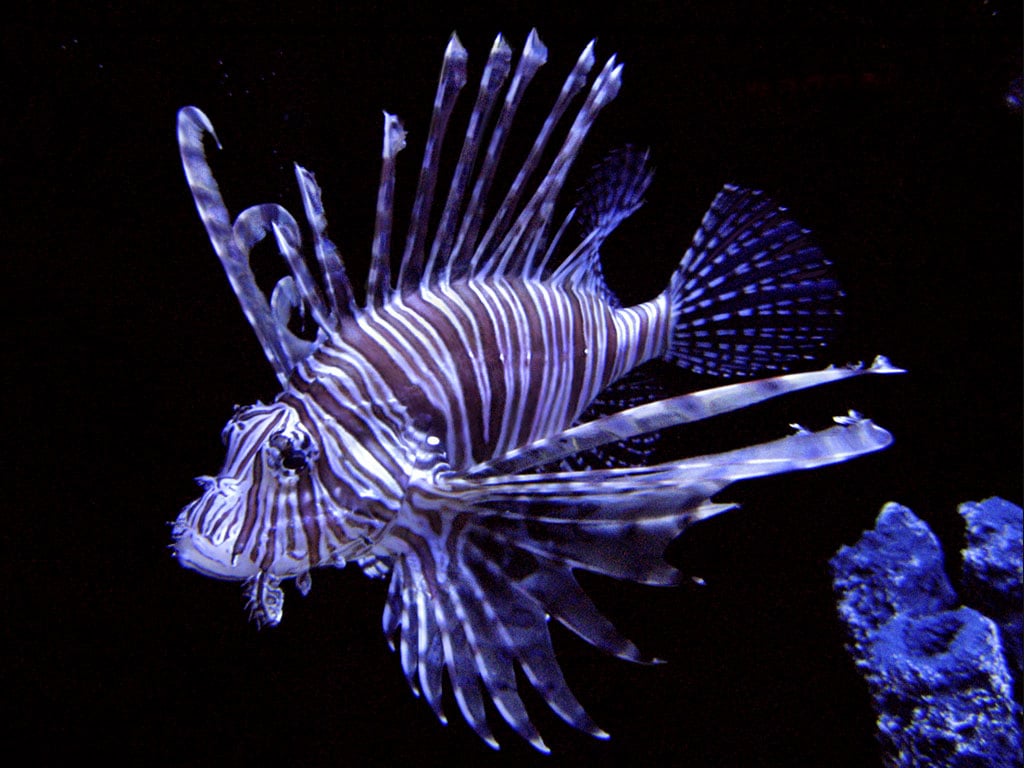
The poisonous purple lionfish (Pterois volitans), which is endemic to the Indo-Pacific, has spread to the Atlantic Ocean as an invasive species. With vibrantly colored stripes and spines that extend out like a lion’s mane, it is well known for its striking look. They are venomous predators that eat tiny fish and other invertebrates and use their spines as weapons. Although they are well-liked in aquariums because of their striking appearance, they pose a threat to local marine species in places where they have been introduced.
Amethyst
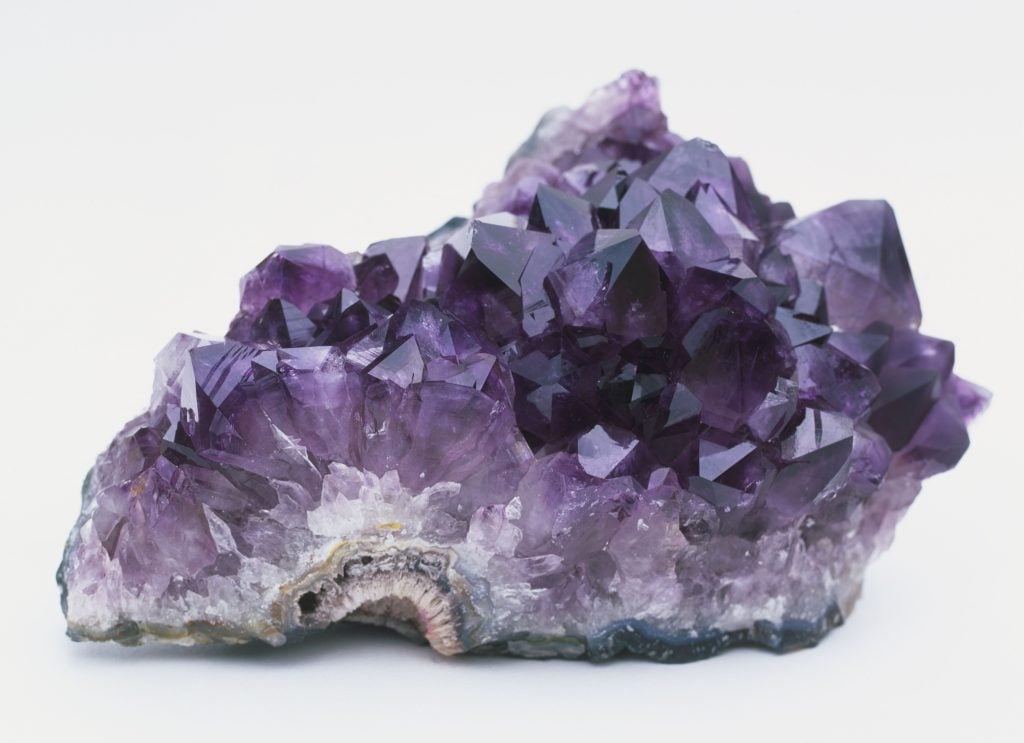
A violet or purple form of quartz called amethyst is frequently used as a gemstone. It frequently appears in geodes and has a Mohs hardness value of 7, making it a durable and well-liked material for jewelry. Amethyst is supposed to offer therapeutic qualities and is related to the crown chakra, which fosters spiritual awareness and mental clarity. It also serves as the February birthstone.
Lepidolite
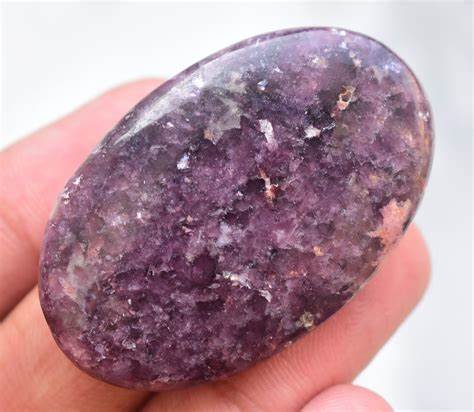
The mineral kind that is referred to as “lepidolite” is a member of the mica family. The presence of minerals like lithium is what gives it its distinctive purple color. It is frequently used as jewelry or as décor and has a glossy, dazzling brightness. Lepidolite is frequently used in complementary medical practices like crystal therapy since it is thought to have therapeutic advantages in addition to its aesthetic ones. Brazil, the United States, and Russia are just a few of the countries where it is present.
Charoite
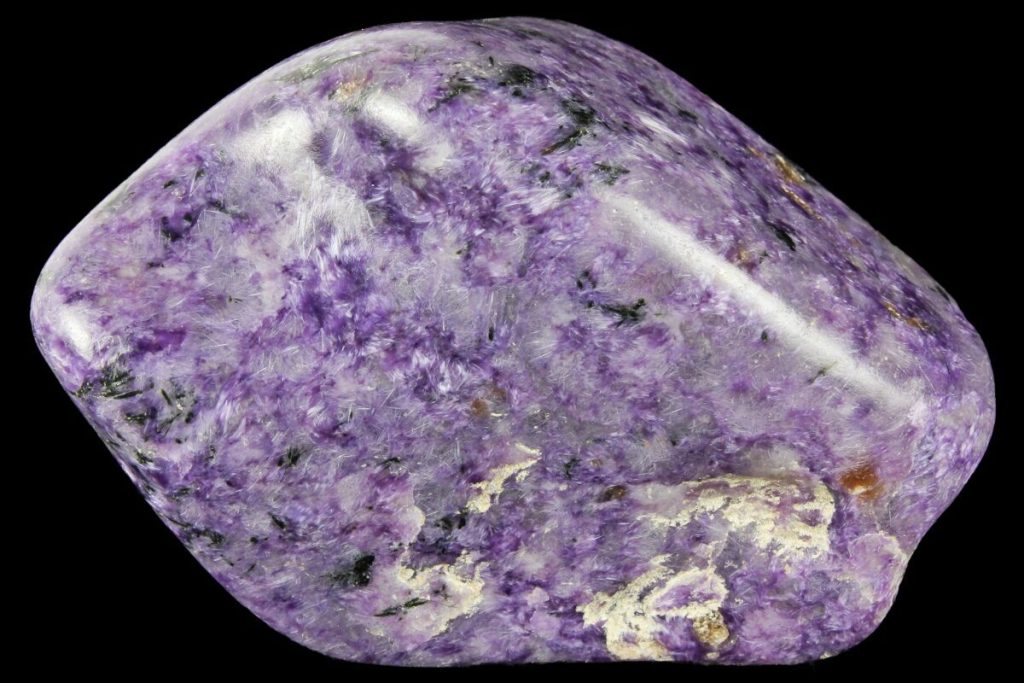
In the Murun Mountains in Yakutia, Russia, there is only one place in the world where charoite can be found. It is well-known for its stunning purple hue, whirling patterns, and lovely chatoyancy (a shimmering appearance when viewed from various angles). Since it was first discovered in the 1940s and given the name of the nearby Chara River, charoite is a relatively recent mineral discovery. Due to its rareness and difficulty in mining, it is a somewhat pricey gemstone that is frequently utilized in jewelry and lapidary work.
Sugilite
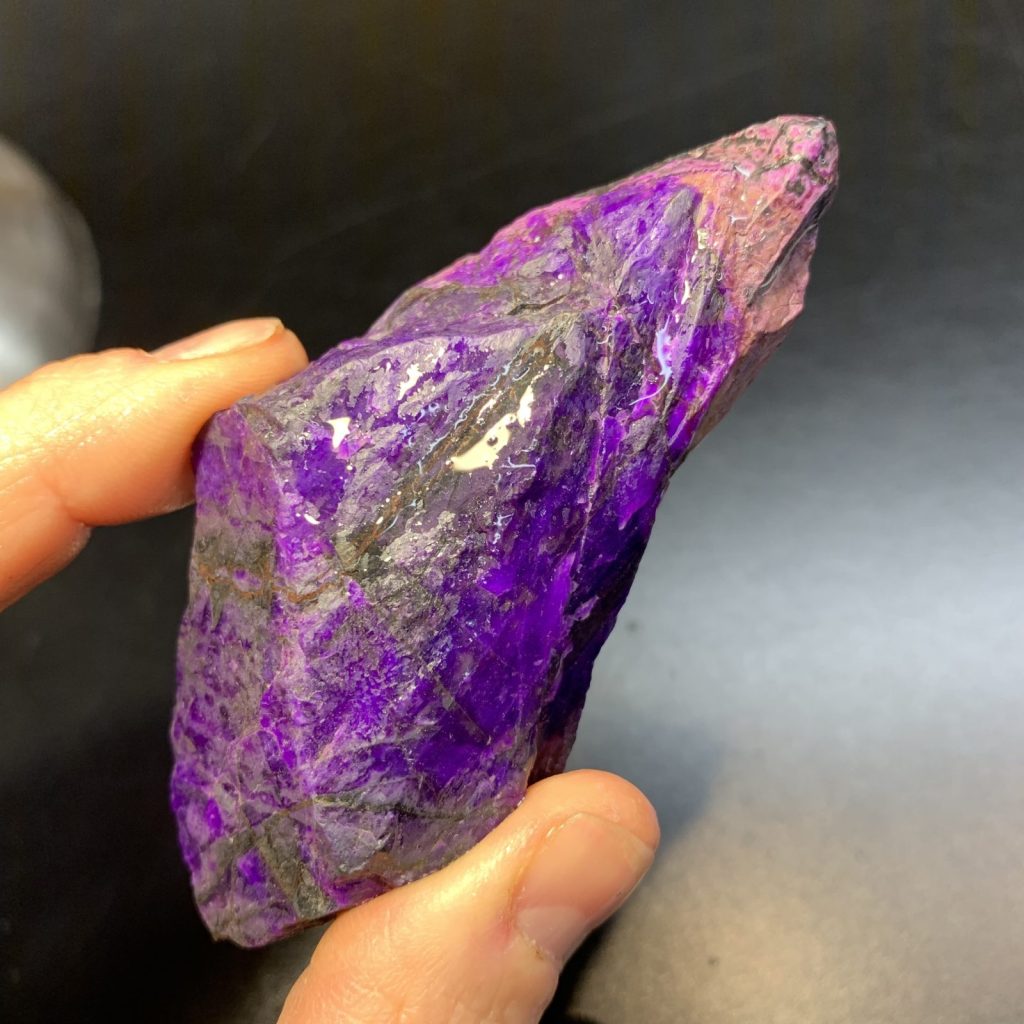
The main elements of sugilite, a rare mineral with a purple hue, are potassium, sodium, lithium, iron, and manganese. Significant deposits weren’t identified in South Africa until the 1980s, despite the fact that it was initially detected in Japan in the 1940s. For its distinctive color, which ranges from light lilac to deep purple, and its hardness, which makes it suitable for use in jewelry, sugilite is highly prized by collectors and gemstone enthusiasts.
Hellebore Flower
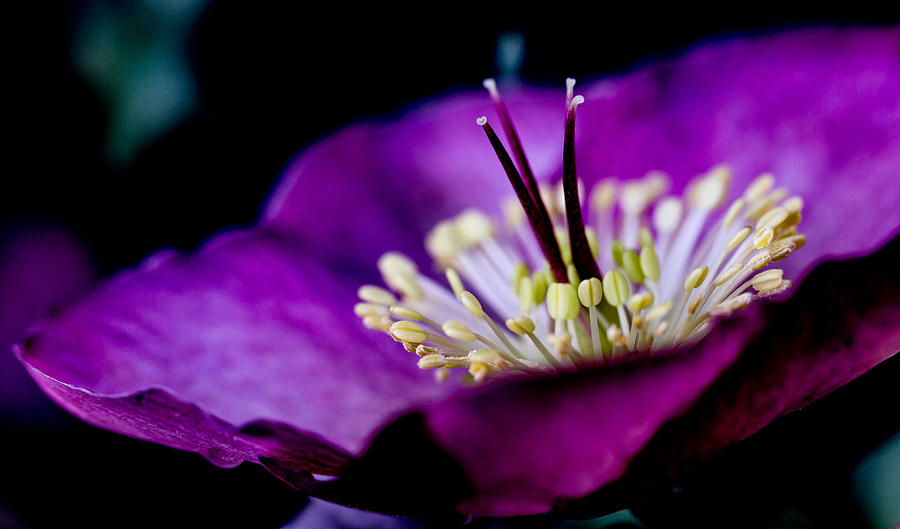
Hellebore is a genus of evergreen and herbaceous perennial plants of the buttercup family, Ranunculaceae, widely known as the Christmas rose or Lenten rose. The blooms come in a range of hues, including white, pink, purple, and green, and bloom in the late winter or early spring. They are renowned for their odd appearance, with cup-shaped blooms and petals that face downward, giving them an appearance that is a little gloomy and enigmatic. Despite their beauty, hellebores should not be handled carelessly since they are poisonous if consumed. They may be cultivated in a variety of climes, from temperate to subtropical, and are well-liked as attractive plants in gardens.
Violet Ground Beetle
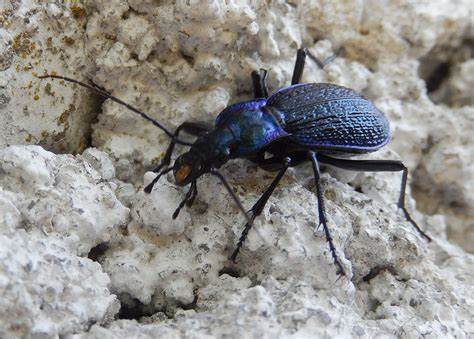
A species of huge ground beetle found all throughout Europe and certain regions of Asia is the violet ground beetle, or Carabus violaceus in scientific jargon. They may be easily distinguished in their native environment thanks to their well-known brilliant metallic violet-blue coloring. These night-active beetles may be found in a range of settings, such as woodlands, farms, and gardens. They devour other insects, slugs, and snails because they are fierce predators. Violet Ground Beetles, despite their intimidating look, are not dangerous to people and are even thought to be helpful in reducing pest numbers.
Black Cap Basslet
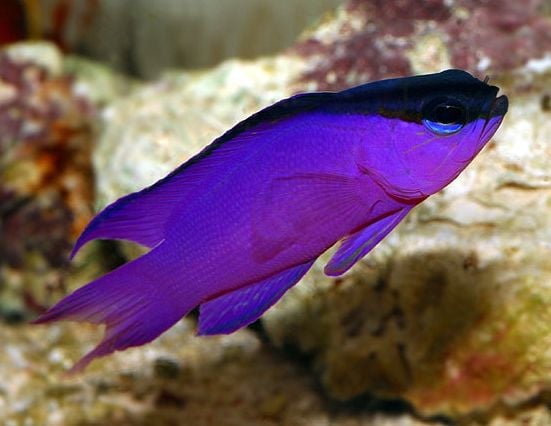
A little saltwater fish from the family Grammatidae, the Black Cap Basslet is a bright little fish. Its fins are a brilliant yellow-orange color, and its body is a deep purple-blue color. It is a native of the Caribbean Sea, where it normally reaches a length of around 3 inches. Due to their eye-catching appearance and straightforward maintenance needs, these fish are well-liked in the aquarium sector. They may be housed with other fish that aren’t aggressive in a saltwater aquarium that is kept clean and has lots of hiding spots because they are typically calm.
Splendid Sunbird
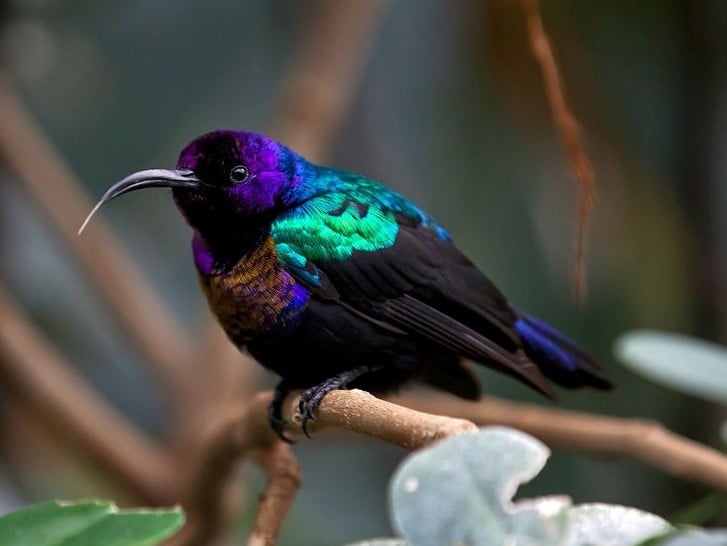
In Africa, there is a little, vividly colored bird species called the Splendid Sunbird (Cinnyris coccinigastrus). The head, back, and throat of the males have a shiny metallic blue–green color, while their breasts and belly are vivid orange-red. Olive-green pigmentation in females is duller and less vivid. They are well recognized for their erratic flying patterns and their capacity to linger in front of flowers and consume nectar. Splendid Sunbirds are widespread over most of Africa and may be seen in a range of settings, such as woodlands, savannas, and gardens.
Purple Nudibranch
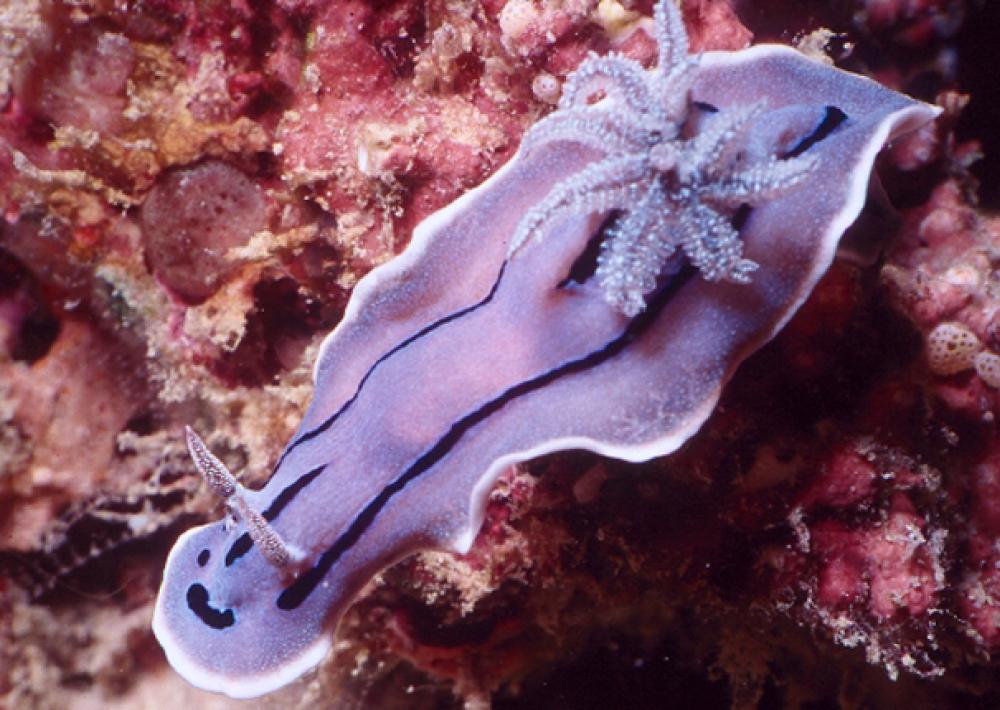
In the shallow seas of the Pacific Ocean, from Alaska to Baja California, one variety of marine gastropod mollusk is called a purple nudibranch, sometimes called a purple sea slug. Its remarkable purple coloring, which varies from deep violet to lavender, gives it the moniker “purple beauty.” It has both male and female reproductive organs because the Purple Nudibranch is a hermaphrodite. It consumes many kinds of sea anemones without suffering any negative effects thanks to the compounds on its skin. The Purple Nudibranch is an intriguing species to see, but it should not be handled or disturbed since it is poisonous to animals and dangerous to people if touched.
Purple Firefish
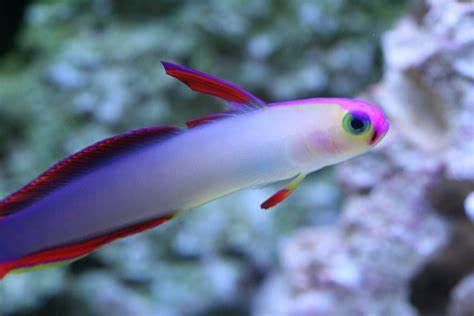
A tiny, vividly colored species of marine fish, Purple Firefish, also goes by the name Decorated Firefish or Diadem Firefish, and it is a member of the Gobiidae family. These fish can be found in the Western Pacific Ocean, especially in the waters of Indonesia and the Philippines. Their striking purple coloring, which contrasts with their vibrant orange and yellow fins, gave rise to their name. owing to their magnificent beauty and calm disposition, purple firefish are well-liked in the aquarium trade, but owing to their sensitive nature and unique dietary needs, they may be fairly difficult to care for. They live in reef ecosystems in the wild and eat copepods and zooplankton, which are tiny invertebrates.
Purple Lubber Grasshopper
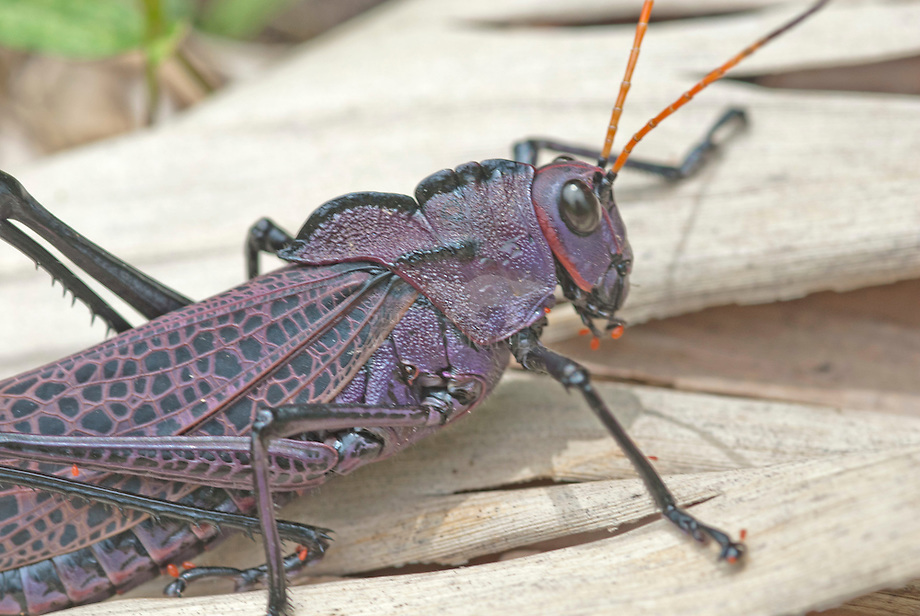
Located in the Southeast of the United States, the Purple Lubber Grasshopper is a big, sluggish grasshopper. Short wings that prevent it from flying and a recognizable purple coloration are what make it unique. It consumes a range of plants and is well-known for its capacity to sequester poisons from the plants it consumes, rendering it unpleasant to predators. The Purple Lubber Grasshopper is occasionally maintained as a pet but is frequently seen as a nuisance because of its propensity to eat crops. Despite this, it is also admired for its distinctive look.
Hummingbird Violet Sabrewing
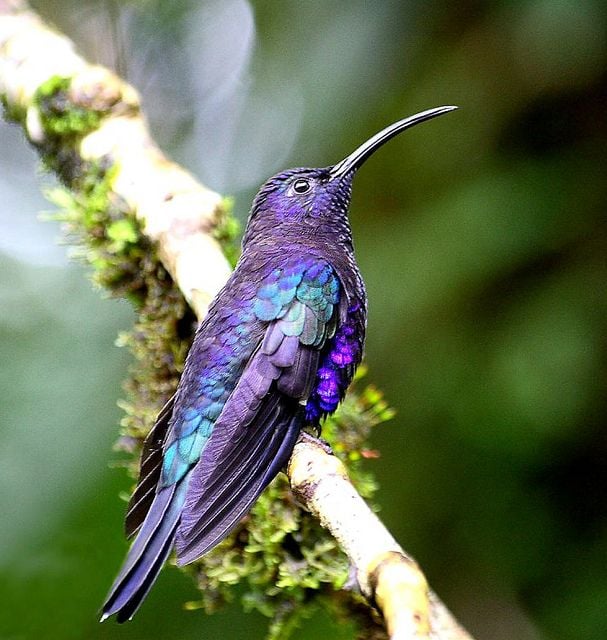
From southern Mexico to western Panama, the woods of Central America are home to the huge and brilliant Hummingbird Violet Sabrewing (Campylopterus hemileucurus). They stand out for their large, curved beak, vivid greenback, and iridescent violet breast and neck feathers. Their wings beat quickly, enabling them to precisely fly backward and hover in midair. They are significant pollinators in their environment and eat nectar from flowers. They are uncommon despite their beauty because of their secrecy and affinity for far-off wooded locations.
Purple Red-Eyed Tree Frog
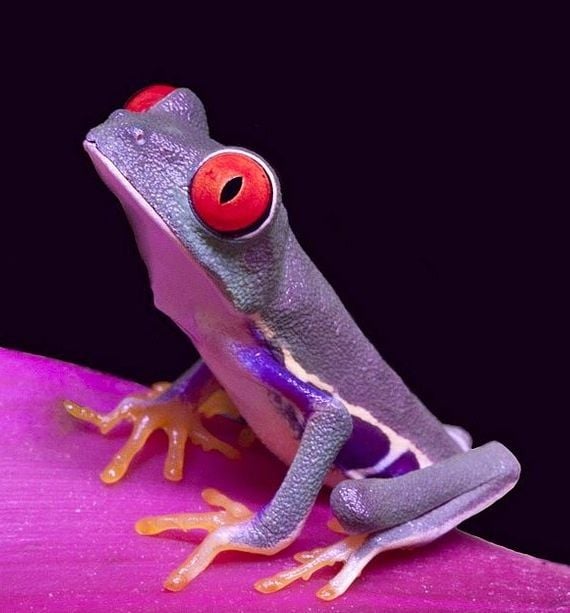
In Central and South America, there is a species of frog known as the Purple Red-Eyed Tree Frog. Its unique purple and green side stripes and bright red eyes make it simple to identify. They can jump incredibly high, live best in shrubs and trees, and consume largely insects. They are nocturnal and popular among pet owners.
Purple Kale
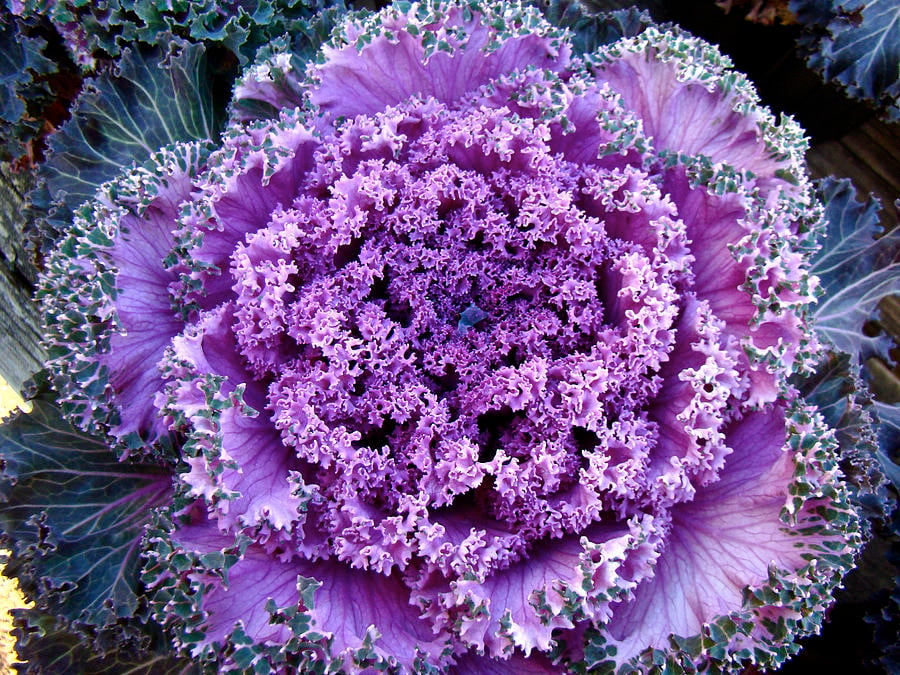
A leafy green vegetable of the Brassica family, purple kale is sometimes referred to as Red Russian kale or Siberian kale. Although it resembles conventional green kale, the leaves and stems have a rich purple or reddish color. Purple kale is a very healthy vegetable that is high in calcium, iron, and vitamins A, C, and K. It may be eaten raw in salads or cooked in a variety of meals such as soups, stews, and stir-fries. It has a little sweeter and milder flavor than green kale.
Purple Corn
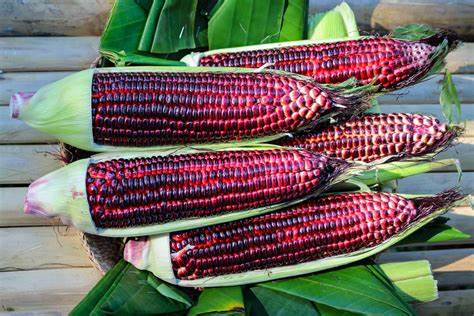
The Andean area of South America is the main growing zone for purple corn. It stands out due to the presence of anthocyanins, a kind of flavonoid pigment, which gives it a rich purple hue. Both contemporary recipes and beverages that are renowned for their antioxidant benefits, as well as traditional South American cuisine, frequently incorporate purple maize. Additionally, it is used to make purple corn flour and oil, which are gaining popularity in the health food sector due to their conceivable health advantages.
Jambul
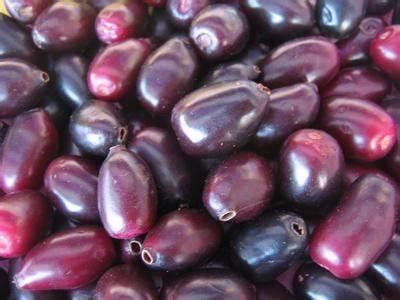
Jambul is a tropical fruit tree that is indigenous to the Indian subcontinent, Southeast Asia, and some regions of Australia. It is also known as Java plum or Syzygium cumini. The tree produces tiny, rounded, purple–black fruits that are used often in sweets, jams, and chutneys, among other types of food. Jambul has been utilized for its possible health advantages in traditional medicine, including its capacity to control blood sugar levels and enhance digestion. The tree’s seeds, bark, and leaves have also been used medicinally in the past.
Fig
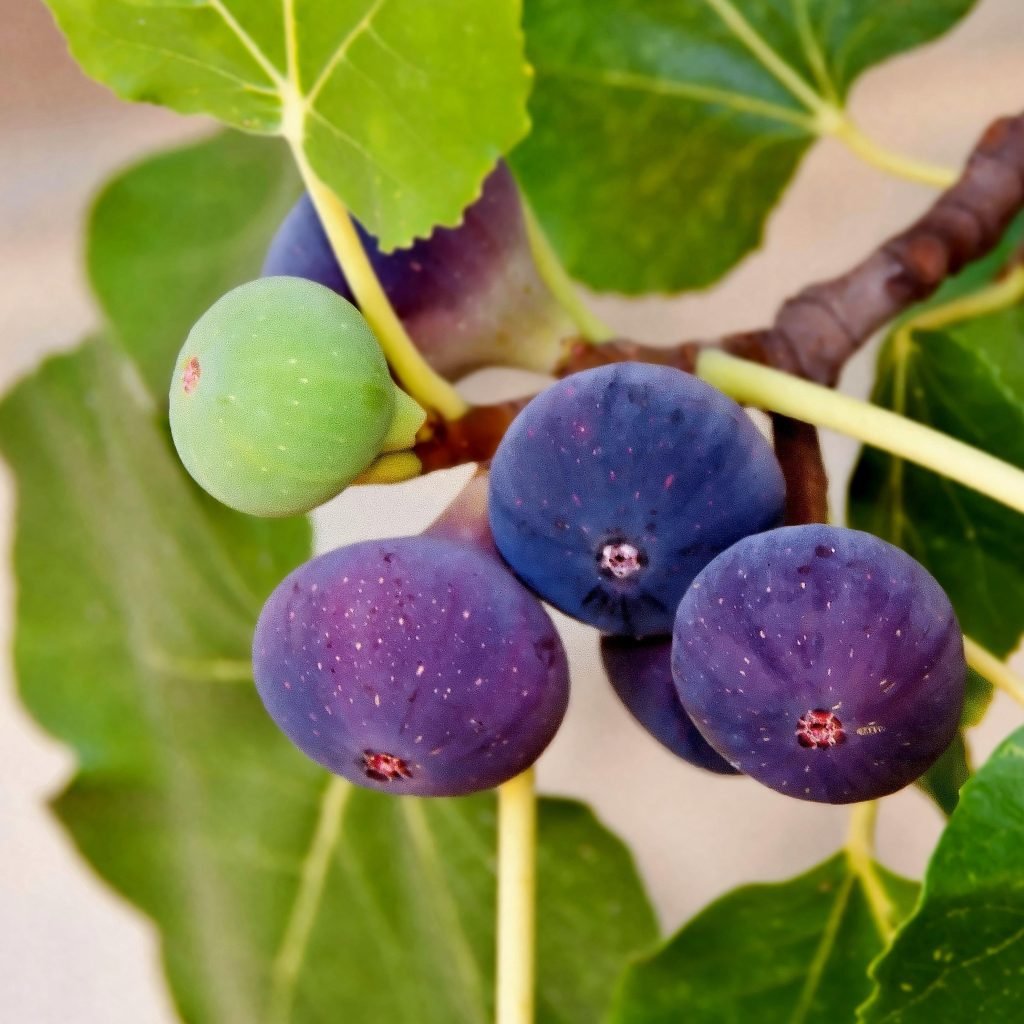
The fig is a pleasant, wholesome fruit that grows on ficus-family trees. It is frequently eaten fresh or dried as a nutritious snack because of its soft and chewy flesh and tiny crunchy seeds. Figs are renowned for their inherent sweetness and are high in fiber, vitamins, and minerals. Additionally, they are used in desserts, jams, and chutneys, among other culinary preparations. Figs are extensively produced in Mediterranean and Middle Eastern nations, and their great flavor and plethora of health advantages are making them more and more well-liked throughout the world.
Purple Zinnia
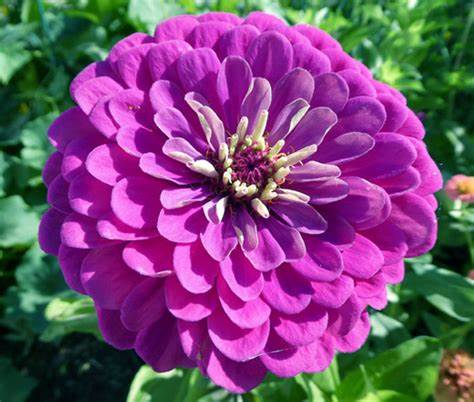
A kind of blooming plant called a purple zinnia produces stunning, sizable, daisy-like flowers in various colors of purple. It is a well-liked garden plant that is simple to cultivate and maintain, and it can add a splash of color to any landscape. Purple zinnias may endure for several days with adequate care and are frequently used in cut flower bouquets.
Purple Unicorn Plushy
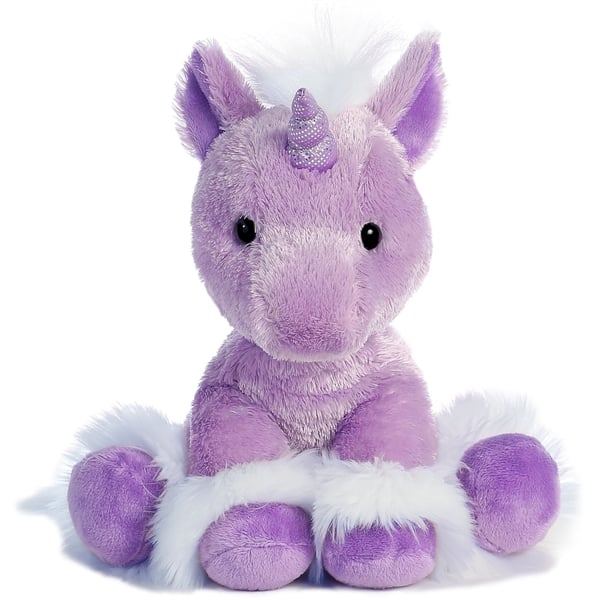
Purple Unicorn Plushy is a fluffy, cuddly plush animal that was made to look like a unicorn. Its mane and tail are vividly colored, and it possesses a horn that sparkles. Premium materials were used in its construction. The soft toy is great for cuddling, playtime, or just as a decorative item in a living room or bedroom. Among kids and unicorn enthusiasts of all ages, it is a popular toy.
The color purple has a fascinating history and has captivated people’s attention for centuries. From beautiful gemstones to different kinds of flowers, purple has been associated with power, nobility, and spirituality. In our modern world, purple continues to be a popular color, seen in fashion, art, and design. Exploring 50 things that are purple has been an enjoyable journey, showcasing the diverse range of objects and phenomena that can be found in this striking hue. Whether you’re a fan of lavender fields, a lover of berry soda, or a BTS fan, there’s something for everyone in the world of purple. So let us continue to appreciate the beauty and allure of this remarkable color and discover even more purple wonders along the way.

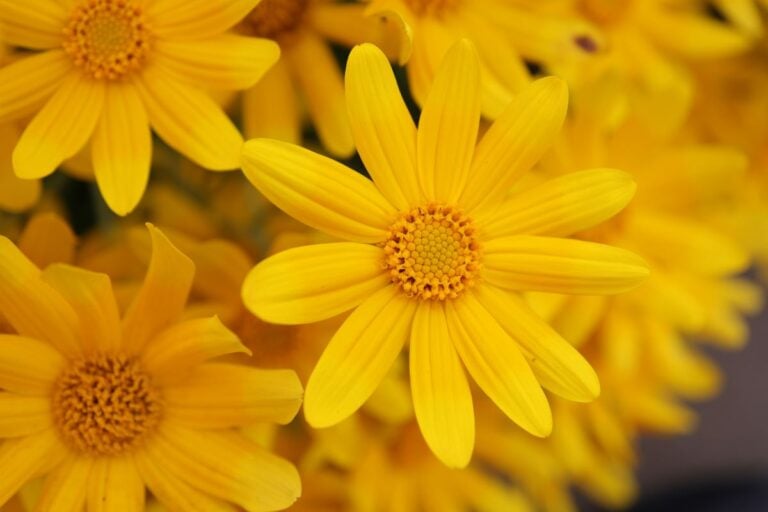



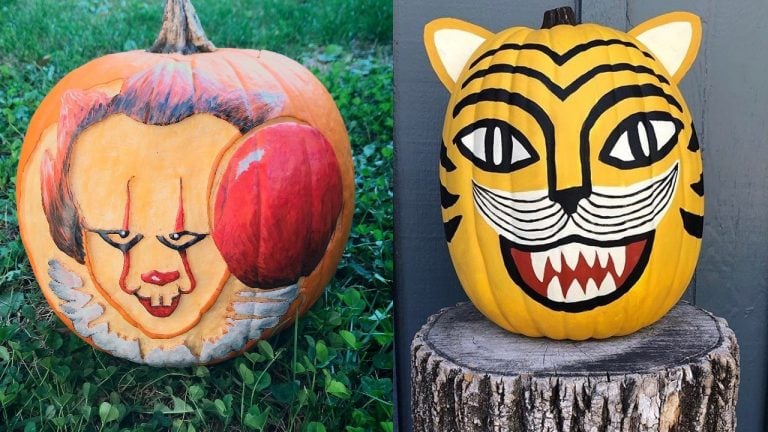

I loved this post! Purple is my favorite color, and it’s incredible to see all the different ways it appears in nature. From the vibrant plums and eggplants to the softer, more muted tones of lavender and lilacs, there’s no shortage of beauty in the purple hues of the natural world. It’s amazing to think about the psychological impact of colors like purple, and how they can affect our moods and emotions. Thank you for sharing this inspiring collection!
[…] In many cultures, purple holds special significance. For example, in religion, it represents spirituality and penance. Understanding this adds another layer of depth to your gardening choices. If you want to learn more about how purple is viewed in different cultures, check out resources on color psychology Color Psychology. […]